- A Guide To Visiting Kenyas...

A Guide to Visiting Lake Nakuru National Park, Kenya

Lake Nakuru National Park, just a three-hour drive from Nairobi in the Great Rift Valley of southwestern Kenya , boasts an abundance of wildlife and spectacular landscapes. Think black and white rhinos, lions, leopards, cheetahs and hippos occupying euphorbia forests, acacia woodlands, savannah grasslands and rocky escarpments around a shallow, alkaline lake. Planning your visit to Lake Nakuru National Park? Discover our guide to one of the best and most easily accessible safari destinations in Kenya.
Tempted to experience it for yourself? Lake Nakuru National Park is one of several fantastic destinations featured on Culture Trip’s exclusive seven-day Kenya tour , led by our local insider.
A brief history of Lake Nakuru National Park

Lake Nakuru has been recognised as a conservation area as far back as 1957. It was declared a bird sanctuary in 1961, before being officially announced as a national park in 1968, extending its boundaries to cover a total area of 188sqkm (73sqmi). In 1977, endangered Rothschild’s giraffes were introduced from western Kenya to protect their population, and in 1984, it was designated as Kenya’s first rhino sanctuary.

Up until 2012, Lake Nakuru was renowned for its vast flamingo population (sometimes exceeding 1.5 million), which covered the lake in a blanket of pink. Since 2012, rising water levels from heavy flooding have drastically reduced this phenomenon, shrinking the flamingos’ breeding and feeding grounds. More recently there have been promising signs of flamingos returning, which bodes well for the health of the park’s biodiversity and its tourism industry.
Which animals to look out for

Flamingos might not be as abundant as they once were, but there’s so much other wildlife to see while you’re in Lake Nakuru National Park. It’s one of the best places in Kenya to see rhinos in the wild – there are roughly 100-150 individuals in total, of which 80 percent are white rhinos and 20 percent black. The park also has a strong reputation for leopard sightings, although these creatures are notoriously difficult to spot owing to nocturnal hunting habits and camouflaged fur.

Lions, cheetahs, hippos, buffalos, hyenas, giraffes and zebras are among the 50 (or more) mammal species living in the park. You can expect to see several types of large python, which are especially prevalent in woodland areas. Also keep an eye out for ostriches, African fish eagles, woolly-necked storks and dusky nightjars, plus an array of other bird species.
When to visit

Given that Kenya sits directly on the equator, temperatures don’t tend to fluctuate a great deal throughout the year. Due to Lake Nakuru National Park’s high altitude, it usually avoids the scorchingly hot weather you might expect elsewhere in the country, with temperatures typically hovering around 25-28C (77-82F) during the daytime and dropping overnight to around 10C (50F).
The best time to visit is during one of the dry seasons – either between July and early October, or January through until early March – as these months provide optimal conditions for wildlife viewing. April and May tend to be the wettest months, and are therefore best avoided, as many animals seek shelter during heavy rains, while dirt tracks used for game drives are rendered unfit for purpose.
How to get there

Getting from Nairobi to Nakuru by car is very straightforward – just follow the A104 road the whole way there. From Nakuru town, the entrance to the national park is 4km (2.5mi) to the south. If you’re coming from Maasai Mara National Reserve, it’s around a five-hour journey along a combination of tarmacked and gravel roads.
It’s also possible to fly from Nairobi to the Naishi airstrip at the southern end of Lake Nakuru National Park, which only takes half an hour – although this route doesn’t always operate, so it’s worth checking the schedules closer to the time of your visit if you intend to fly.
Entry to Lake Nakuru National Park costs £45.38 ($60) for non-Kenyan adult visitors per 24 hours and £26.47 ($35) for children.
Where to stay

There’s an excellent variety of places to stay both within Lake Nakuru National Park and just outside – it all depends on your budget and what kind of experience you’re after. Most lodges and camps offer safari experiences, including game drives, bush walks and bird watching excursions with experienced park rangers.
Within the park, Lake Nakuru Lodge is a delightful eco-friendly retreat, totally surrounded by wilderness, meaning you’ll have a chance to spot wildlife directly from your accommodation. Facilities include a large outdoor pool, a spa, and an on-site restaurant serving delicious Kenyan and Indian cuisine, plus traditional bush barbecues.
Sarova Lion Hill Game Lodge, overlooking the eastern shore of Lake Nakuru, is another outstanding choice, featuring 67 luxurious villas, a panoramic terrace bar and an organic vegetable garden that provides fresh ingredients used in the on-site restaurant. Flamingo Hill Tented Camp and Mbweha Camp, both on the outer edges of the park, are also options worth considering.
If you don’t mind staying just outside the park, there are plenty of hotels in Nakuru town, such as Sarova Woodlands Hotel and Spa, which offers spacious, air-conditioned rooms, two restaurants serving an eclectic mix of cuisines and an outdoor pool. You can spend a night there, and enjoy a game drive in Lake Nakuru National Park, as part of Culture Trip’s specially curated seven-day Kenya adventure .
What else to do

Although going on a wildlife safari is the biggest draw of visiting Lake Nakuru National Park, it’s by no means the only thing to do while you’re there. Take a trip to Baboon Cliff, on the northwestern side of the park, for spectacular views of the lake, and visit the Makalia Falls – a beautiful waterfall on the southern side of the park, with unusual rock formations and a hiking trail nearby. You’ll see plenty of birdlife here, and possibly other animals such as buffaloes, drinking from the rock pools.
Just outside the park, on the outskirts of Nakuru town, the Hyrax Hill Museum provides a fascinating insight into the ancient communities of the Great Rift Valley, through a series of archaeological excavations. Meanwhile, Menengai Crater, a short drive out of town, is one of the largest calderas in the world – another superb hiking spot with magnificent vistas of the surrounding area.
Looking for somewhere to stay in the capital? Discover our guide to the best hotels in Nairobi , bookable on Culture Trip.
Since you are here, we would like to share our vision for the future of travel - and the direction Culture Trip is moving in.
Culture Trip launched in 2011 with a simple yet passionate mission: to inspire people to go beyond their boundaries and experience what makes a place, its people and its culture special and meaningful — and this is still in our DNA today. We are proud that, for more than a decade, millions like you have trusted our award-winning recommendations by people who deeply understand what makes certain places and communities so special.
Increasingly we believe the world needs more meaningful, real-life connections between curious travellers keen to explore the world in a more responsible way. That is why we have intensively curated a collection of premium small-group trips as an invitation to meet and connect with new, like-minded people for once-in-a-lifetime experiences in three categories: Culture Trips, Rail Trips and Private Trips. Our Trips are suitable for both solo travelers, couples and friends who want to explore the world together.
Culture Trips are deeply immersive 5 to 16 days itineraries, that combine authentic local experiences, exciting activities and 4-5* accommodation to look forward to at the end of each day. Our Rail Trips are our most planet-friendly itineraries that invite you to take the scenic route, relax whilst getting under the skin of a destination. Our Private Trips are fully tailored itineraries, curated by our Travel Experts specifically for you, your friends or your family.
We know that many of you worry about the environmental impact of travel and are looking for ways of expanding horizons in ways that do minimal harm - and may even bring benefits. We are committed to go as far as possible in curating our trips with care for the planet. That is why all of our trips are flightless in destination, fully carbon offset - and we have ambitious plans to be net zero in the very near future.

Places to Stay
The best hotels to book in nakuru, kenya, culture trip spring sale, save up to $1,100 on our unique small-group trips limited spots..

- Post ID: 1002093701
- Sponsored? No
- View Payload
Lake Nakuru

Most Recent: Reviews ordered by most recent publish date in descending order.
Detailed Reviews: Reviews ordered by recency and descriptiveness of user-identified themes such as wait time, length of visit, general tips, and location information.

Lake Nakuru - All You Need to Know BEFORE You Go (2024)
- Lake Nakuru National Park; Admission Ticket (From $75.00)
- Full-Day Lake Nakuru National Park Private Tour from Nairobi (From $195.00)
- 4-Day Masai Mara and Lake Nakuru safari from Nairobi (From $990.00)
- Lake Nakuru National Park Day Tour from Nairobi (From $130.00)
- Lake Nakuru Day Trip From Nairobi (From $150.00)
- (2.53 mi) Sarova Lion Hill Game Lodge
- (5.49 mi) The Cliff - Lake Nakuru National Park
- (2.71 mi) Flamingo Hill Tented Camp
- (2.56 mi) Sarova Woodlands
- (8.96 mi) Lake Nakuru Sopa Lodge
- (1.79 mi) Jamia Food Mart
- (1.62 mi) Fika And Feast
- (3.28 mi) Gilani's
- (3.68 mi) Java House Westside Mall
- (2.21 mi) Mission in Action Restaurant
- (1.82 mi) Lake Naivasha
- (3.41 mi) Elohim Tours & Travel
- (5.97 mi) Menengai Crater
- (3.18 mi) Lake Nakuru
- (2.93 mi) Quest Backpackers Safaris

- +254 712683442
LAKE NAKURU NATIONAL PARK
What to see in lake nakuru, beautiful places in lake nakuru.
For pure variety of landforms and wildlife few parks equal this gem sitting on a pretty alkaline lake just a short drive from Nairobi. Lake Nakuru National Park offers visitors the chance to spot exotic birdlife but also rare species like rhinos and endangered Rothschild’s giraffe. Also keep a safari eye out for lion, leopard, and cheetah. This unique reserve has it all.
Besides the lake, Nakuru is a picture-perfect blend of acacia forests, waterfalls, woodlands, and distinctive euphorbia trees all nestled under towering rocky escarpments. Here you’ll find a surprising variety of wildlife in these picturesque settings – look for hyena, monkey, baboon, wild dog, hippo, and even python hanging from the trees!

The Birds of Lake Nakuru National Park
Perhaps Nakuru’s signature attraction is its complement of assorted birdlife found on and around the lake. Most famous, of course, are its flocks of Greater and Lesser pink flamingos, sometimes filling the shoreline in bright ribbons of color.
They are joined by the avian company of cormorants, kingfishers, ostriches, pelicans, geese, storks, and raptors such as eagles and herons. During your visit here you’ll see quite a few of the over 500 species that inhabit this rich eco-system.
The Rare and Endangered
Besides great populations of birds, Nakuru also boasts large numbers of endangered species such as the black and white rhino. The park’s special sanctuary gives safari-goers a chance to encounter these large, elusive creatures.
Also roaming the acacia forests look for the endangered Rothschild’s giraffe, and keep an eye out for the uncommon African wild dog, which makes its home here.

Pick of the Best Highlights of Lake Nakuru National Park

Lion Hill, Out of Africa & Baboon Cliff – Lake Nakuru features awesome points of observation to enjoy viewing the wildlife below. You’ll get pretty views of the park from these vantage points. Look for lions near Flamingo Hill.
Sea of Pink – The numbers of flamingos vary with the season and also from year to year. At one time their numbers were in the millions but you can still see bright flocks adorning the shoreline – a colorful contrast to the blues, greens, and rich ochres of the park’s foliage.
Makalia Falls – Amongst the park’s scenic spots, the falls are their most visual after the rains. You’ll find a nearby campsite with plenty of opportunities for bird watching.
Big Cats – Although Nakuru makes its reputation with its birdlife and rhinos, there are still opportunities to spot lion, leopard, cheetah, hyena, serval cat, jackal, and smaller carnivores like civet, genet, and mongoose.

Lake Nakuru National Park Statistics
The park is on the smaller side – 188 sq. km (73 sq. mi) – but this makes it easier to cover its hills, grasslands, and forests. And, to spot the wildlife as you safari through its verdant topography.
Location : Near to Nairobi – 170 km (105 mi) – it’s easily reached in just a few hours. You can take a day trip and even combine it with other nearby parks.
Climate : The park has a surprisingly higher elevation at 1,756 m (5757 ft.) and is cooler than most Kenya parks, even though it is near the equator. Not too hot or cold, nor wet or dry. Temperatures range from 12 0 – 25 0 c (54 0 – 77 0 f).
Best time to visit : Lake Nakuru is open throughout the year. Even the rainy season can’t put a damper on travel through the park as the roads are well-maintained. However, the dry season from July through December still presents the best conditions for spotting the park’s colorful diversity of wildlife.
Operating hours : The park is open from 6 am to 6 pm daily. Entry is not allowed on foot and visitors can only hike in special areas in the company of a KWS ranger.
Getting there: Book a tour with Africa Kenya Safaris . We’ll take you there in style – a specially outfitted 4 x 4 Safari Jeep.
By air – we’ll arrange for you to fly into the nearby Naishi airstrip.

Lake Nakuru National Park Facts
Want to discover more about the enchanting Lake Nakuru National Park? Our quick Q&A guide will help you with useful Lake Nakuru facts and information on its location, wildlife and just what makes it one of our finest safari destinations!
Is Lake Nakuru a freshwater lake?
Yes – Lake Nakuru is an enchanting freshwater lake nestled in the heart of Kenya’s spectacular Rift Valley. This breathtaking natural wonder is renowned for its remarkable biodiversity and awe-inspiring landscapes. With its shimmering blue waters and surrounding lush vegetation, Lake Nakuru captivates visitors from around the world. Let’s delve deeper into the captivating features and ecological significance of this extraordinary freshwater lake.
Abundant Wildlife and Avian Splendour
Lake Nakuru’s freshwater ecosystem is home to a diverse array of wildlife, making it a must-visit destination for nature enthusiasts. The lake’s nutrient-rich waters support a thriving population of flamingos, which form a mesmerizing pink carpet along its shores. These elegant birds create a breathtaking spectacle, attracting visitors with their graceful movements and vibrant plumage. Additionally, Lake Nakuru National Park, situated around the lake, offers a sanctuary to numerous animal species, including endangered black rhinos, zebras, giraffes, and buffalos. Wildlife enthusiasts can embark on exhilarating game drives and witness the remarkable coexistence of different species within this captivating freshwater ecosystem.
Ecological Significance and Conservation Efforts
Beyond its aesthetic appeal, Lake Nakuru holds significant ecological importance. It serves as a crucial habitat for various bird species, including over 400 recorded avian species, making it a paradise for ornithologists. The lake’s ecosystem thrives on an intricate balance, where the abundance of algae supports an array of aquatic invertebrates, which, in turn, attract a plethora of birdlife. To preserve this delicate balance and protect the diverse wildlife, concerted conservation efforts have been implemented. Lake Nakuru National Park and its surrounding areas are managed meticulously, ensuring sustainable tourism practices and safeguarding the lake’s rich biodiversity for generations to come.
How deep is Lake Nakuru?
Lake Nakuru has an approximate average depth of just 1 foot (0.3m). This shallow depth is a characteristic feature of the lake, which is situated within Lake Nakuru National Park in Kenya’s Great Rift Valley. Despite its shallow waters, Lake Nakuru attracts a remarkable variety of wildlife and remains a significant natural habitat for numerous species.
How the shallow depth of Lake Nakuru attracts flamingos
The shallow depth of Lake Nakuru is ideal for the proliferation of algae, a primary food source for the large flocks of flamingos that gather along its shores. The alkaline lake provides the perfect conditions for the growth of this algae, attracting thousands of these iconic birds and creating a stunning pink spectacle.
Shallow yet abundant in wildlife
While Lake Nakuru’s depth may be relatively shallow, it does not diminish the abundance of life that thrives within its waters and along its banks. The lake supports a diverse ecosystem and sustains a wide range of bird species, including pelicans, cormorants, and various waterfowl. Additionally, the park’s surrounding woodlands and grasslands provide a habitat for mammals such as rhinos, giraffes, and buffalos, further enhancing the overall biodiversity of the area.
A naturally beautiful shallow lake
Despite its shallow nature, Lake Nakuru continues to captivate visitors with its natural beauty and its vital role in supporting an array of wildlife. Its unique characteristics make it an exceptional destination within Lake Nakuru National Park, offering visitors a memorable experience amidst the stunning landscapes and thriving ecosystems of this remarkable Kenyan treasure.
How big is Lake Nakuru National Park?
Lake Nakuru National Park spans an impressive area of approximately 188 square kilometers (73 square miles). This compact yet diverse park is situated in the Great Rift Valley of Kenya, East Africa. Its manageable size makes it an ideal destination for visitors who want to explore a concentrated area bursting with natural wonders and abundant wildlife.
Captivating landscapes and habitats
Despite its relatively smaller size compared to some other national parks in Kenya, Lake Nakuru National Park offers a wealth of captivating landscapes and habitats. From the shimmering waters of Lake Nakuru to the surrounding woodlands, grasslands, and rocky cliffs, the park showcases a variety of ecosystems that support a rich and diverse array of flora and fauna.
See amazing wildlife
Within the park’s boundaries, visitors can witness an impressive concentration of wildlife, including lions, leopards, rhinos, giraffes, zebras, buffalos, and countless bird species. The park’s compact size allows for excellent wildlife viewing opportunities, as animals are often within close proximity to each other and to the park’s well-maintained roads and trails.
A jewel in Kenya conservation
Lake Nakuru National Park’s size may be modest, but its offerings are anything but. It is a jewel in Kenya’s wildlife conservation efforts, providing an immersive experience in a condensed and easily accessible space. Whether you’re embarking on a day trip or a longer safari, the park’s size ensures that every moment is filled with remarkable encounters and breathtaking scenery.
What is Lake Nakuru famous for?
Lake Nakuru is famous for its spectacular display of flamingos and its thriving population of rhinos. These unique features have earned it a well-deserved reputation as one of Kenya’s most renowned national parks. Here’s more about why Lake Nakuru is famous:
1. Flamingo Spectacle
Lake Nakuru is widely recognized for its awe-inspiring spectacle of flamingos. The lake’s alkaline waters attract thousands of these vibrant birds, creating a breathtaking sight. The shoreline becomes a vibrant pink carpet as the flamingos gather to feed on the abundant algae and small crustaceans that thrive in the lake. Witnessing this mesmerizing scene is an unforgettable experience and a dream come true for birdwatchers and photographers.

2. Rhinoceros Conservation
Lake Nakuru National Park is also famous for its successful rhinoceros conservation efforts. It serves as a sanctuary for both white and black rhinos, two endangered species. The park’s dedicated conservation initiatives have led to a significant increase in the rhino population, making it one of the best places in Kenya to spot these majestic creatures. Observing these ancient mammals in their natural habitat is a rare and thrilling opportunity.
3. Diverse Wildlife
Lake Nakuru’s fame extends beyond flamingos and rhinos. The park is home to a rich diversity of wildlife. Visitors can encounter lions, leopards, giraffes, zebras, buffalos, baboons, waterbucks, and many other fascinating species. Exploring the park’s diverse ecosystems, including the woodlands, grasslands, and acacia forests, offers a chance to witness the intricate web of life that thrives in this remarkable ecosystem.
Lake Nakuru’s fame as a destination lies in its ability to captivate visitors with its breathtaking display of flamingos, its vital role in rhinoceros conservation, and its incredible array of wildlife. Whether you’re an avid birdwatcher, a nature enthusiast, or simply seeking an extraordinary safari experience, Lake Nakuru National Park is a must-visit destination that promises to leave a lasting impression.
Where is Lake Nakuru located?
Lake Nakuru is located in the Great Rift Valley of Kenya, East Africa. It is nestled within Lake Nakuru National Park, which spans an area of approximately 188 square kilometers. The park is situated about 170 kilometers northwest of Nairobi, the capital city of Kenya.
What is the latitude and longitude of Lake Nakuru?
The precise coordinates of Lake Nakuru are approximately latitude 0.35° S and longitude 36.08° E. This stunning lake is part of the East African Rift System and lies at an elevation of 1,756 meters above sea level. Its picturesque surroundings, including the lush woodlands and rocky cliffs, make it a captivating destination for nature lovers and wildlife enthusiasts.
The perfect location for day trips and longer safari tours
Lake Nakuru’s strategic location within the Great Rift Valley offers visitors easy access to this natural wonder. Its proximity to Nairobi makes it a popular choice for day trips or longer safaris. Whether you’re embarking on a wildlife adventure or simply looking to soak in the breathtaking landscapes, Lake Nakuru’s location in Kenya’s Great Rift Valley provides a remarkable backdrop for an unforgettable experience.
What is the Lake Nakuru National Park entrance fee?
For non-resident adults, the entrance fee is $60USD, while non-resident children are charged US$35USD. Citizens of Kenya and Residents of East African Community countries pay an entrance fee of 860KSh for adults and 215KSh for children. Please note that these fees are subject to change, and it is advisable to visit the official website of Lake Nakuru National Park for the most up-to-date information.
Lake Nakuru park entrance fees included with our safari tours
If you’re interested in visiting Lake Nakuru National Park and want a hassle-free experience, Africa Kenya Safaris offers fantastic safari tours that include the park entrance fees in the tour price. Their tours provide an opportunity to explore the park’s stunning wildlife, including the iconic pink flamingos, rhinos, lions, and more. With experienced guides and comfortable accommodations, Africa Kenya Safaris ensures that you have an unforgettable adventure in Lake Nakuru National Park. So book your safari tour with us and enjoy the convenience of having park entrance fees included, whichever safari park you visit!
Which are the best animals to see in Lake Nakuru National Park?
When visiting Lake Nakuru National Park, you’ll be treated to a remarkable display of diverse wildlife. From rare rhinos to vibrant flocks of flamingos, the park is a haven for animal enthusiasts. Here are ten of the best animals to see in Lake Nakuru National Park:
Lake Nakuru National Park is renowned for its successful rhino conservation efforts. Both white and black rhinos can be spotted here, offering a rare opportunity to observe these magnificent creatures up close.

2. Flamingos
The park’s shimmering lake is often adorned with a breathtaking sight – vast numbers of flamingos. These vibrant birds create a stunning pink carpet along the shoreline, presenting an unforgettable spectacle.
Lake Nakuru National Park is home to a healthy population of lions. Keep your eyes peeled for these majestic predators as they roam the grasslands, exhibiting their raw power and grace.
4. Leopards
Although elusive, leopards can be spotted in the park’s dense woodlands. Patiently scour the trees and rocky outcrops for these stealthy big cats, known for their striking beauty and agility.
5. Giraffes
Lake Nakuru National Park offers an excellent opportunity to witness the elegant giraffes in their natural habitat. Watch in awe as these gentle giants gracefully move through the acacia trees, reaching for leaves with their long necks.
Large herds of buffalo can be observed in Lake Nakuru National Park. These robust animals, known for their iconic horns, gather near water sources and create an impressive sight as they graze and wallow in the mud.
With their striking black and white stripes, zebras are a common sight in the park. Capture photographs of these beautiful creatures as they graze peacefully or gallop across the open plains.
The park is home to several troops of baboons, providing an opportunity to witness their complex social dynamics and playful antics. Keep an eye out for these intelligent primates as they move through the trees or forage on the ground.

9. Waterbucks
Lake Nakuru National Park offers sanctuary to various antelope species, including the elegant waterbucks. These large antelopes can be spotted near water bodies, showcasing their unique physical characteristics.
10. Warthogs
You’ll likely encounter warthogs during your visit to Lake Nakuru National Park. These peculiar-looking creatures with their distinctive tusks and warty faces roam the grasslands, adding a touch of charm to the park’s wildlife.
Witnessing these incredible animals in their natural habitat is an unforgettable experience. By visiting Lake Nakuru National Park, you’ll have the chance to encounter these ten remarkable species and many more, creating cherished memories that will last a lifetime.
This is Lake Nakuru National Park
A rich expression of water, forest, towering rock, and exciting peaks, Nakuru is a small treasure to discover. A fun addition to any safari, this beautiful park serves up the bright colors of its birdlife with the thrills of big cats and the quiet certitude of its protected species.

Join us at Nakuru National Park
Africa Kenya Safaris offers several safari adventures to this magnificent reserve. Just contact us to get your safari started.
Here are some of our Lake Nakuru tours:

Our clients
Driving technology for leading brands, our accreditations and booking security.
Africa Kenya Safaris Ltd is licensed under the Kenya Tourism Regulatory Authority ( TRA ) . It is Bonded member No. AS/720 of the Kenya Association of Tour Operators ( KATO ) , Ecotourism Kenya , East African Wildlife Society, and the African Travel and Tourism Association ( ATTA )

Lake Nakuru National Park
Quick navigation.
Lake Nakuru National Park is located in the southwestern part of Kenya , northwest of Nairobi. The national park encompasses an area of 73 square miles (188 sq km). It is a UNESCO World Heritage Site celebrating the flamingos and abundant wildlife.
Lake Nakuru is the foundation of the park serving as a wildlife haven. The maximum depth is only 6 feet (1.8 m) with an average depth of 1 foot (.30 m) making it easy for animals to access. It is one of the Rift Valley lakes sitting at an elevation of 5,755 feet (1,754 m) above sea level.
Nakuru is an alkaline lake, which is what further draws birds and wildlife to its shores. The national park and lake are most renowned for the tens of thousands of flamingos which can reach over a million at their peak. The best place to view the view flamingos is from Baboon Cliff.
The serene landscapes of the area include grasslands, marsh, outcrops, rocky cliffs, and sedge. Yellow-barked acacia trees add to the traditional African wilderness experience.
An area around 116 miles (188 km) has been fenced to create a protected area for both black and white rhinoceroses as well as giraffes. The park features about 70 white rhinos and another 25 eastern black rhinos. It is one of the largest collections of rhinos throughout Kenya.
Wildlife is bountiful with a populous predator presence to reflect the abundance of prey. Predator species include lion, cheetah, leopard, and hyenas. Large pythons might be found as well. Giraffe and the two species of rhino are mammalian highlights however there are several other species. The waterbuck is more common than in other parks.
There is a small number of hippo that can be found along the reeds of the lake. Along with the waterbuck, visitors might also see Reedbuck and Bushbuck.
Birdwatchers can hope to see African fish eagle, Verreaux’s eagle, Goliath heron, kingfisher, and of course an abundance of flamingos. It is a spectacular place for birdwatching with over 400 species. There are over a dozen different predator bird species. The flamingo population has earned the lake and national park the slogan, “the greatest bird spectacle on earth.”
The shallow lake is rich in algae and according attracts the flamingos who eat around 551,155 pounds (250,000 kg) of algae per acre a year.
Lake Nakuru National Park is only 102 miles (164 km) away from Nairobi making it easy to make a day trip out of the city to experience this amazing encounter with wildlife.
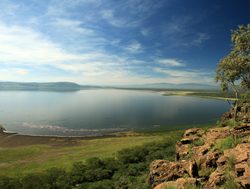
The pure volume of flamingos is a highlight. Making your way to the lookout from Baboon Cliff is a must with views out over the sea of pink flamingoes. When they take to the skies, it is an amazing scene.
Almost every visitor traveling to Africa for game viewing hopes to see a rhino. The good news is, this is one of the most rhino populous places in Kenya, and rhino sightings are expected.
Lake Nakuru National Park Trails
Lake Nakuru National Park is rich with wildlife including several species. The reason people explore the national park is because of the animal encounters. Accordingly, hiking or trekking is not permitted.
Lake Nakuru Highlights
- Endless Flamingos
- Black and White Rhinos
- Africa Geographic, A birdwatcher’s paradise at Lake Nakuru National Park, https://africageographic.com/blog/lake-nakuru-national-park-kenya/ , retrieved December 2019.
- Britannica, Lake Nakuru National Park, https://www.britannica.com/place/Lake-Nakuru-National-Park , retrieved December 2019.
- Kenya Wildlife Service, Lake Nakuru National Park, http://www.kws.go.ke/lake-nakuru-national-park , retrieved December 2019.
- Lonely Planet, Lake Nakuru National Park, https://www.lonelyplanet.com/kenya/the-rift-valley/lake-nakuru-national-park , retrieved December 2019.
- Magical Kenya, Lake Nakuru National Park, https://magicalkenya.com/places-to-visit/wilderness-areas/lake-nakuru-national-park/ , retrieved December 2019.
- UNESCO, Lake Nakuru National Park, https://whc.unesco.org/en/tentativelists/1344/ , retrieved June 2020.

- United Kingdom
- Discover East Africa
- Kenya Guide
- Lakes of Kenya
Lake Nakuru National Park
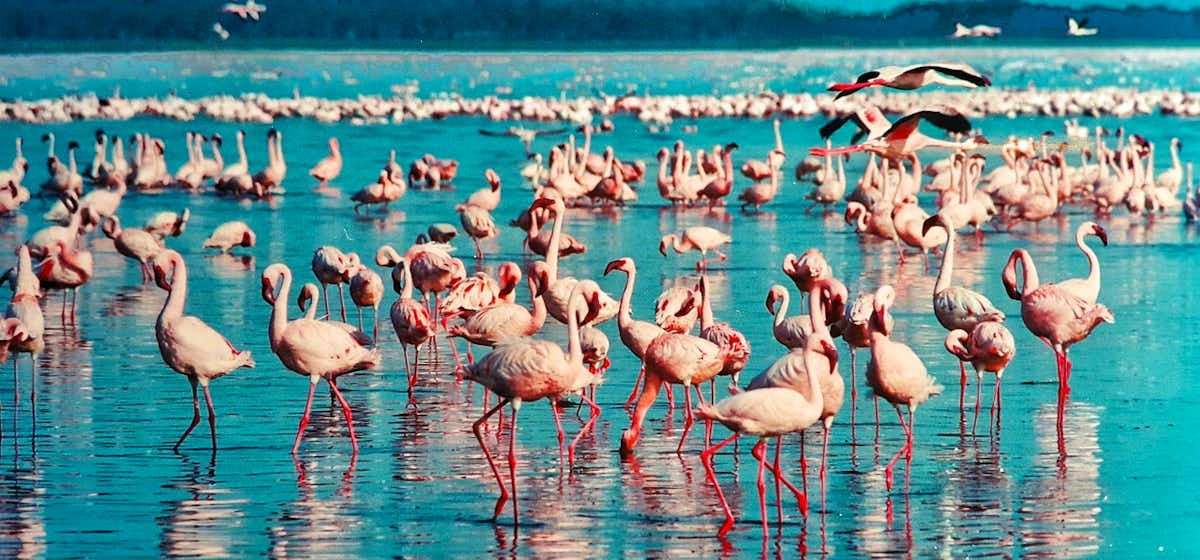
From a distance, Lake Nakuru appears covered in a thin, bright pink blanket. As you get closer, the picture gets clearer, and you're soon staring at a crowd of 2 million flamingos. These wading birds are drawn to Lake Nakuru to nest on its shores and feed on its rich supply of algae.
Lake Nakuru, at a glance
Located in the Great Rift Valley, Lake Nakuru sits at an elevation of 1,745 m, and it is famous for the vast numbers of flamingos that feed off its algae . Lake Nakuru varies in size according to rainfall, and its surface area varies between 5-45 km².
The park lies south of Nakuru , the fourth-largest settlement in Kenya. Feeding pressures and pollution have reduced the flamingo population in recent years, but there are now signs of recovery.
Lake Nakuru National Park is also home to a large rhino population . These beasts can often be spotted lazing under the shade of the luscious acacia trees that surround the lake.
Surrounded by waterfalls , cliffs , and forests , the lake is a vital water source for zebra, buffalo, and the endangered Rothschild giraffe.

Where does Lake Nakuru National Park fit into my Kenyan adventure?
Lake Nakuru’s flamingos are the park’s primary attraction. However, you also have the chance of seeing a broader variety of species, including rhinos, giraffes, and leopards.
Lake Nakuru is a great standalone day trip if you don't have enough time to visit Kenya’s more popular national parks like the Maasai Mara or Amboseli .
Just a 3.5-hour drive from Nairobi along the Nairobi-Nakuru Highway, Lake Nakuru National Park is easily accessible from the capital.
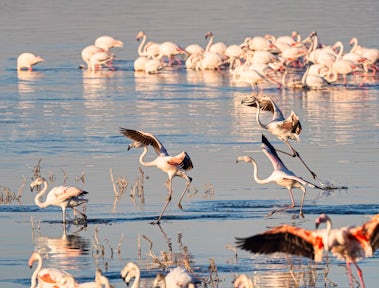
A flock of flamingos on the lake
Wildlife at Lake Nakuru National Park
Lake Nakuru National Park supports a spectacular array of wildlife , including 400 bird species, over 50 mammal species, and over 50 species of flora.
In 1987, the park was declared a rhino sanctuary , and the park’s white and black rhinos have thrived in recent years. In 2009, the park was home to over 25 eastern black rhinoceroses and around 70 southern white rhinoceroses.
However, Lake Nakuru is most famous for the flocks of up to 2 million greater and lesser flamingos that nest on its shores.
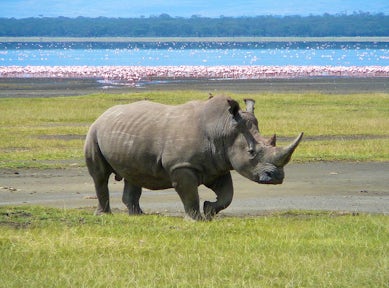
In 1977, the endangered Rothschild Giraffe was introduced to the park. These giraffes were relocated from western Kenya for their protection, and Lake Nakuru is now home to a healthy population of Rothschild Giraffes.
You can also expect to see waterbuck, Cape buffalo, hyenas, and hippos. Fortunate adventurers may get a glimpse of lions, cheetahs, and leopards. Leopard sightings have increased in recent years .
Large pythons inhabit the park’s woodland, and you may see them hanging from trees.
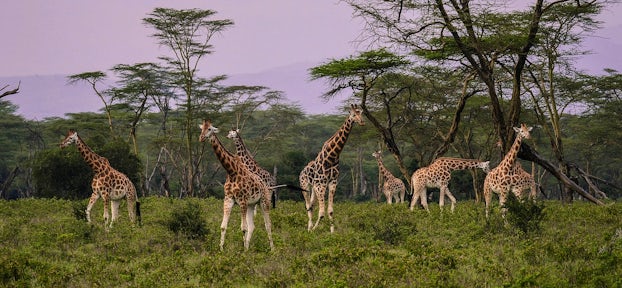
Top 5 things to do in Lake Nakuru
1. game drives.
Lake Nakuru National Park is a great place for safari game drives .
The lake supports a vast eco-system, and the park contains a wide variety of habitats, from wetlands to grasslands to dense forest .
Flamingos, rhinos, and giraffes are the easiest animals to spot around the lake, but buffalos, zebras, lions, and leopards can sometimes be spotted .
2. Visit the Baboon Cliff
This cliff is an excellent viewpoint , and it overlooks the entire valley . Baboon Cliff derives its name from the groups of baboons that are known to roam in the area.
The cliff is a great spot for a scenic picnic and there are several picnic benches at the top . However, you should take care when you are eating since the baboons have been known to steal food.
The views from Baboon Cliff are at their best in the morning, with crisp clear skies and the haze from the morning sun lighting up the panoramic view .
There are several great hiking trails around baboon cliff for those wanting to stretch their legs, and the cliff itself is easily accessible by car.
3. Out of Africa viewpoint
The Out of Africa viewpoint is the most impressive viewpoint in the park .
A short hike is required to reach the viewpoint, involving some steep sections up the rocky path and the trail is significantly steeper than the one that leads to Baboon Cliff.
The viewpoint was made famous by the 1985 film ' Out of Africa ', and it derives its name from this Hollywood appearance.
4. Makalia Waterfall
Makalia Falls is a small waterfall in the southern part of Lake Nakuru National Park, and they are easily accessible via a short drive from the park’s gates.
The falls has a seasonal flow, and it can grind to a halt during the dry season. The falls has a height of around 10m , and they are fed by the Makalia River.
Although Makalia Falls is not the most dramatic waterfall in the world, it is a great spot for a light hike or an afternoon picnic .
5. Cycle with the Rhino
Cycle with the Rhino is an annual event at Lake Nakuru National Park . Every year, hundreds of people come together to cycle around the entire park to raise money for community-based conservation projects in the park.
Despite its name, the event raises money for a range of conservation projects, such as the construction of a perimeter fence to reduce poaching and human-wildlife contact.
18km of the baboon-proof fence have been erected since fundraising began in 2003.

Brilliant says
The park entrance fee is around $60 USD for adults and $35 USD for children. You can only pay by card on arrival. If you have booked your trip with us, all entrance fees are included in your trip price.
Getting to Lake Nakuru National Park
If you are driving from Nairobi, you can travel along the Nairobi-Nakuru Highway. The drive takes around 3.5 hours , and you will drive along a mixture of tarmac and gravel roads. From the town centre at Nakuru, it is a further 4km to the entrance gate to the park.
If you are coming up from the Maasai Mara , you can use the Nderit Gate entrance on the west side of the park .
It is also possible to fly to from Nairobi , and the flight from Jomo Kenyatta International Airport Lake Nakuru to the Naishi Airstrip takes just 25 minutes .
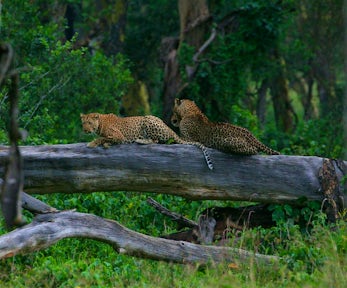
When to visit Lake Nakuru National Park?
The best time to visit Lake Nakuru National Park is during the dry seasons . June to October is the long dry season, and January to March is the short dry season.
During the dry seasons, many of the smaller watering holes dry up, causing animals to gather at Lake Nakuru for water. This significantly increases your chances of wildlife sightings .
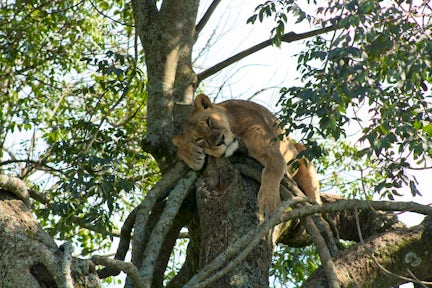
Accommodation in Lake Nakuru National Park
Camping sites.
Flamingo Hill Tented Camp : Located in the north of the park, this exclusive camp offers 25 furnished tents which have sweeping views over Lake Nakuru . Each tent includes 2 four poster beds, an en-suite with a shower, and a private veranda that overlooks the plains of Lake Nakuru National Park.
Makalia Camp : Situated in the south of the park next to Makalia Falls and a small river that flows into Lake Nakuru, this camp has a great location . This public campsite is a good budget option .
Rhino Campsite : This popular camp is situated 38km from the main gate of Lake Nakuru National Park. You can choose between a farmhouse which has 4 comfortable rooms that can house up to 10 guests, and a well-maintained camp site .
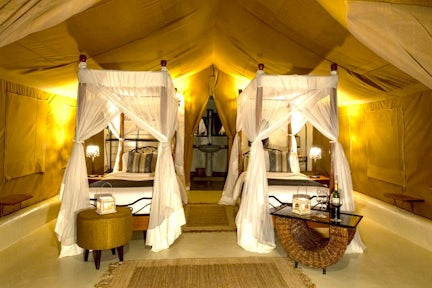
Mbweha Camp : Located on the southern border of the park, this luxury camp is a great base for your adventures. Nestled within vast acacia trees and thick vegetation, the lodge has a pool and 10 rustic cottages with thatched roofs. The camp offers a range of activities and you can even try a gourmet bush lunch.
Lakira Camp Nakuru : An intimate and quiet lodge, masked away in trees and foliage of the park. The discreet location gives you a better chance of coming closer to the wildlife. This luxurious camp has scenic views of the glistening lake and has a more classic bush-camp aesthetic.
Lake Nakuru Lodge : An eco-friendly lodge which offers sweeping views of the verdant countryside that surrounds the lake. Its restaurant serves a delicious menu of Indian, African, and American dishes.
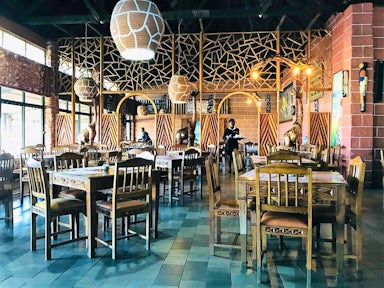
Lake Nakuru FAQs
Why is lake nakuru famous.
Lake Nakuru is famous for the vast number of flamingos that nest on its shores. Up to 2 million greater and lesser flamingos nest at Lake Nakuru to feed on its rich supply of algae.
Is Lake Nakuru worth visiting?
How much does it cost to get into lake nakuru national park.
For travellers who live outside of East Africa, the park entry fee is US$60 for adults and $35 for children and students at the time of writing. The entry fee is only valid for 24 hours after purchase.
Where is Lake Nakuru National Park located?
Lake Nakuru is located in the Great Rift Valley and it sits at an elevation of 1,745m. If you are driving from Nairobi, you can travel along the Nairobi-Nakuru Highway. The drive takes around 3.5 hours, and you will drive along a mixture of tarmac and gravel roads. From the town centre at Nakuru, it is a further 4km to the entrance gate to the park. If you are coming up from the Maasai Mara, you can use the Nderit Gate entrance on the west side of the park. It is also possible to fly to from Nairobi, and the flight from Jomo Kenyatta International Airport Lake Nakuru to the Naishi Airstrip takes just 25 minutes.
Popular Trips to Kenya
The tours below showcase just some of what is possible. Use these itineraries as starting points, or to draw inspiration. Then get in touch, and let our expert team help craft the perfect itinerary for you.
Kenya Luxury in the Wild
The elite of Kenya safari experiences, explore some of Kenya's most remarkable wilderness areas, and get well off the beaten track. Luxury tented camps will keep you comfortable at night, and the Kenyan countryside takes care of the rest. …
A Kenyan Odyssey
A 9-day voyage across the best wildlife destinations in Kenya. As always, Kenya's beautiful tented camps will keep you comfortable, no matter how many miles from civilisation you find yourself.…
Kenya and Tanzania Combined
The ultimate East African adventure. Starting in the Maasai Mara in Kenya, work your way south through the Serengeti towards Ruaha National Park in Tanzania. Close out your trip with a couple of days on the island paradise of Zanzibar.…
Kenya Luxury Safari
A luxury safari combining two of Kenya's most impressive parks. Spend a night in the world-famous Giraffe Manor before heading out into the great Kenyan countryside. The combination of Samburu with the Masai Mara offers wonderful contrast, and you'll be…
The Great Wildebeest Migration
This 7-day safari combines two of Tanzania's most impressive safari destinations: the Ngorongoro Crater and the Serengeti. You'll stay in luxury tented camps throughout your trip. If you travel between July and October, you'll have the opportunity to witness a…
Ol Pejeta & Maasai Mara
Combine two of Kenya's most beautiful wilderness areas over 7 days. Meet Najin and Fatu, the last two remaining northern white rhinos in the world. Take to the skies over the Maasai Mara in a hot air balloon. Safari, but…
Walking Safari in the Naboisho Conservancy
4 days exploring the Naboisho Conservancy, hiking between fly camps in the Greater Maasai Mara region. A hark back to the early days of East African safari, before the 4x4's and luxe lodges. …
Get to know us
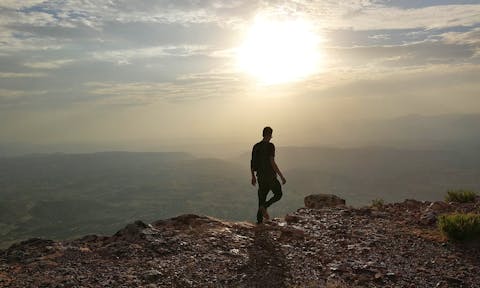
Booking with us
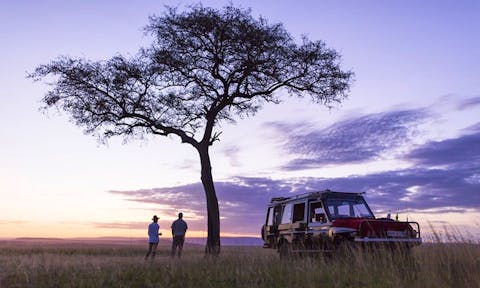
Values & Commitments
Ready to plan your african adventure.
We'll spend some time listening to your aspirations, then discuss the kind of experience that might suit you.
Next we'll discuss the options, shortlist the best trips for you and present you our impartial recommendations.
We'll place a 24 hour hold on your preferred option - without obligation - whilst we talk through the details.
Whatever your budget, group size, length of stay, preferred activity or appetite for adventure, we can help.
This website uses cookies to ensure you get the best experience on our website. Privacy policy
We've spent decades in East Africa and can help you avoid the common pitfalls when travelling in this region. That's why hundreds of travellers choose to explore East Africa with Brilliant every year.
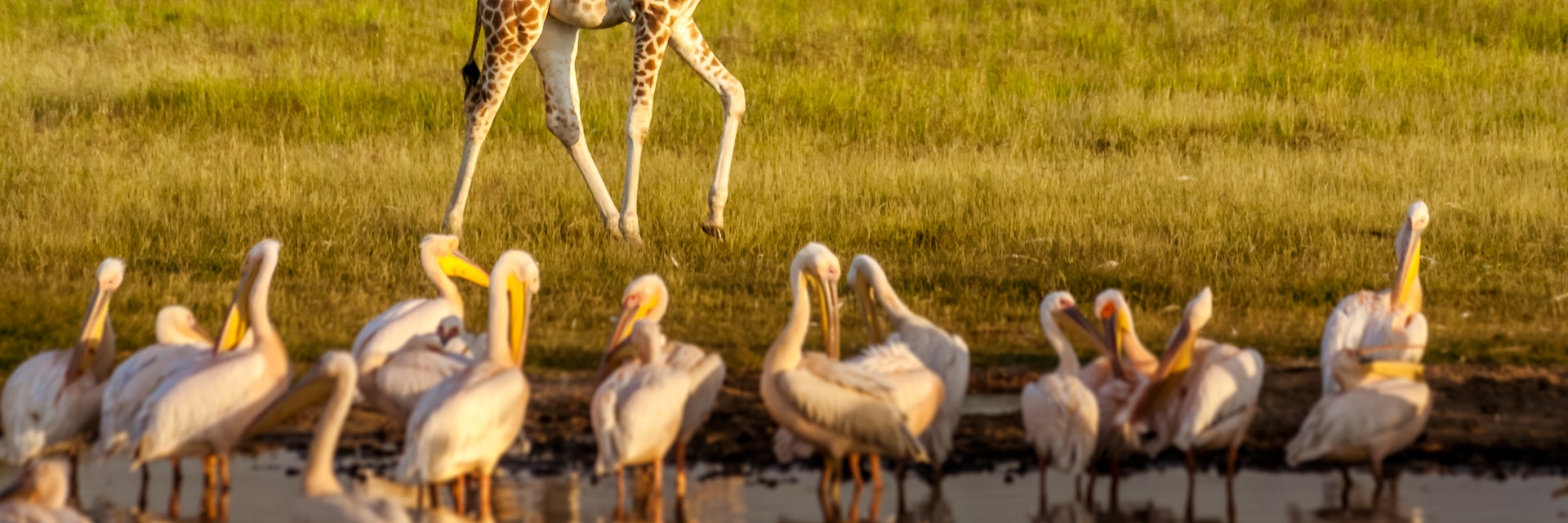
© Pierre-Yves Babelon/Shutterstock
Lake Nakuru National Park
Southern Rift Valley
Just two hours' drive from Nairobi, Lake Nakuru is among Kenya's finest national parks. Flanked by rocky escarpments, pockets of forest and at least one waterfall, the park is gorgeous year-round and is home to black and white rhinos, lions, leopards, hippos and giraffes. Rising water levels in 2014 forced the park's famous flamingos to flee, as well as the park authorities to move the entrance gate – the old one now stands submerged along with hundreds of now-dead trees, a haunting first impression.
The southern end of the lake is the best place to see wildlife, away from the busy city of Nakuru, which borders the park's northern extent. The forested area below Flamingo Hill is a favourite lion-spotting point – lionesses love to sleep in the trees – while leopards frequent the same area, and are also seen around Makolia camp.
Get In Touch
https://www.kws.go.ke
Lonely Planet's must-see attractions

Hyrax Hill Prehistoric Site
This archaeological site, 4km outside Nakuru, is a great spot for a peaceful amble away from the rhinos and tourists. It contains a museum and the remains…

Egerton Castle
11.01 MILES
If you want to muse on lost love and where it goes, visit Egerton Castle on the outskirts of Njoro. A replica of Tatton Hall in England, the castle was…

Menengai Crater
With transport and 15 minutes to play with, you can be out of the grimy streets of Nakuru and standing on the rim of Menengai Crater, a 485m-high natural…

Kenana Knitters
15.38 MILES
What began as a hobby for three ladies knitting under a tree now employs more than 1200 local people and exports all over the world. The knitters use…

Out of Africa Lookout
To get the best view that takes in much of the park, head up to the rocky Out of Africa Lookout. Less frequented by tour groups than the lower Baboon…

Baboon Cliffs
This popular viewpoint and one-time lunch spot has superlative views out over the lake, with some fine aerial vistas down onto the flooded lake shore…

Soysambu Conservancy
14.23 MILES
This private conservancy offers quite extensive wildlife viewing, as well as camping. It is home to colobus monkeys, Rothschild's giraffes and about 450…

Lake Elmenteita
Serene and framed by shaggy hills, Elmenteita is quieter and prettier than the lakes to its south, although its relatively open surrounds ensure that it…
Nearby Southern Rift Valley attractions
1 . Hyrax Hill Prehistoric Site
Lining the western side of the road on the approach to Lake Nakuru if you're coming from town, these eye-catching murals depict everyone from George and…
3 . Baboon Cliffs
4 . Menengai Crater
5 . Out of Africa Lookout
6 . Lake Elmenteita
7 . Egerton Castle
8 . Makalia Falls
12.14 MILES
The modest Makalia Falls, at the extreme southern end of the park, swell after the rains when they're at their best. You can camp at the nearby park…
Lake Nakuru National Park

- 1.1 History
- 1.2 Landscape
- 1.3 Flora and fauna
- 1.4 Climate
- 3 Fees and permits
- 4 Get around
- 5 Do & see
- 7 Eat & drink
- 8.1.1 In the park
- 8.1.2 Just outside
- 8.2 Camping
- 9 Stay safe
Lake Nakuru National Park is one of Kenya ’s two Premium Parks, and is a birdlover’s paradise. It surrounds Lake Nakuru in the Central Rift Conservation Area in the Southern Rift Valley region of Kenya . Originally protected as a bird sanctuary, this park hosts over 400 bird species, including five globally threatened species, and is an important stop on the African-Eurasian Migratory Flyway. It is on the list of Ramsar sites , internationally important wetlands.
This park was also the first national Rhino sanctuary and hosts one of the world’s highest concentrations of the Black Rhinoceros.
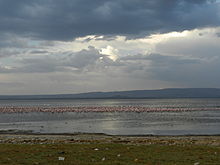
Understand [ edit ]
Lake Nakuru National Park is one of Kenya’s 23 National Parks and one of two in the Premium category, along with Amboseli National Park . It can be found in Central Kenya, about 90 miles (140 km) northwest of Nairobi , in the Nakuru district of the Rift Valley Province. The ecosystem is comprised of the lake, surrounded by wooded and bushy grasslands. The park supports a wide ecological diversity including Flamingos (Greater and Lesser) and other water birds, and the Black and White Rhinoceros which are the major attractions of the area.
History [ edit ]
Lake Nakuru National Park started as a bird viewing and sport shooting area of migratory birds in 1950s, but has since been expanded and fenced to protect populations of endangered giraffes and rhinoceros.
- 1957 - declared a conservation area
- 1961 - Southern two thirds designated a bird sanctuary
- 1964 - the bird sanctuary was extended covering the whole lake and a small strip of land around it
- 1968 - gazetted as National Park
- 1977- a number of Rothschild Giraffes translocated to the park from western Kenya for their protection
- 1984 - established as first government managed rhino sanctuary
- 1986 - an electric fence was erected around the park to replace the earlier chainlink
- 1987 - the park was declared a rhino sanctuary.
- 1990 - the lake was designated as a Ramsar site
- 2009 - designated as IBA (450 identified bird species)
- 2011 – Designated by UNESCO as one of the Kenya Lakes System (Lakes Elementaita, Nakuru and Bogoria) World Heritage Sites
Landscape [ edit ]
Depending on the season, Lake Nakuru can cover up to about 25 sq mi (40 km²), and the entire park covers about 116 sq mi (188 km²). The lake is highly saline, so it is surrounded by a grassland of highly adaptable alkaline grasses. This park also has many hills with established viewpoints from which the lake, the woodlands, and often times the herds of buffalo can be seen.
Flora and fauna [ edit ]
In addition to its 400 species of birds, Lake Nakuru National Park is home to more than 50 mammal species, and over 500 species of flora. This park is famous for the flocks of Greater and Lesser flamingos that gather around the lake, sometimes with as many as 2 million! You can find this great pink mass around the lake for a good part of the year, as these birds stay mostly within the Rift Valley, migrating from lake to lake. Because Lake Nakuru National Park was fenced to protect endangered rhinos and giraffes, it can’t support African elephants, so you won’t find any here!
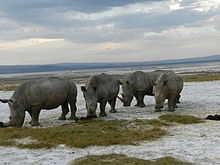
You are guaranteed to see: White Rhinos, African Buffalos, Rothschild Giraffes, Zebras, Impalas, Olive Baboons, Vervet Monkeys, Waterbucks, a variety of water birds (Yellow-billed Pelicans, Marabou Storks, Hammerkops, Fish Eagles, etc.)
Common in the park: Hyenas, Jackals, Lesser Flamingos, Hippopotamus, Pythons
If you are lucky you may see: Lions, Leopards, Black Rhinos, Wild Dogs, Colobus Monkeys, Cheetahs
Don’t forget the plants! In Lake Nakuru National Park you can see a wide variety of beautiful landscapes: from grasslands to dense forests, and the very rare tarconanthus bushlands and euphorbia forests.
Climate [ edit ]
Lake Nakuru National Park is classified as dry sub-humid to semi-arid, which basically means it’s not too wet and not too dry, or too hot or cold. The climate in this area is really beautiful, you won’t fry in the sun here like you would in Amboseli or Tsavo . You are likely however, to get rained on. Late afternoon is the most common time for rain showers. If you want the best chance of avoiding these rains, consider coming some time between July to December or January to March. However, avoiding the rain is not guaranteed, even during these dryer months. Also, these months are in the peak tourism season, so the park will be very crowded with tourist vehicles. If you don’t mind a little rain and you want to avoid the crowd, come in December or April to June (you’d also save money coming at this time!). Another great thing about this park- it’s fenced, so even during the wet months you will see wildlife because they cannot migrate away from the park.
Get in [ edit ]
The park opens at 7AM. If you are travelling from Nairobi, then take the Naironi-Nakuru highway. On the way to Nakuru you will have a great view of the Rift Valley , so drive slow and enjoy the scenery! From Nairobi, it is about a 30-minute drive to a scenic overlook at 7200 feet (2200 m) above sea level and from here you can get a spectacular view of the volcanoes Suswa and Mount Longonot . There are also a group of great little curio shops at this stop where you can buy souvenirs. Seeing the entire park could take you a full day, so plan to arrive around 9Am unless you have more than a day in the area. It might take you few minutes to get your ticket and the vehicle checked.
The park has very well established roads that make most parts of the park accessible by 2-wheel-drive vehicles. Some less-travelled parts and most viewpoint hills will require 4-wheel-drive. The park has three gates: the Main Gate and Lanet Gate that link the park with the Nairobi-Nakuru highway and the less-used Nderit Gate.
If you choose to fly: It’s about a 25-minute flight from Jomo Kenyatta International Airport in Nairobi to the Naishi airstrip inside the park.
Fees and permits [ edit ]
The entry fee is US$80 for adult, nonresident foreigners, $40 for nonresident children and students. If possible, pay in US dollars. If the fee is paid in Kenyan shillings (Ksh), the fee is converted to US dollars at a very unfavorable rate.
For Kenyan nationals the fee is Ksh 1,000 for adults, Ksh 200 for children; for foreign adult residents of Kenya the fee is Ksh 1,000 and one-half that amount for resident children ages 3 through 17. If you’re using a currency other than the US dollars, see here [dead link] for an up-to-date exchange rate calculator.
A really cool thing that KWS has started is called SafariCard. You can buy a permanent one ahead of time and load it up with money to use at several of Kenya’s parks, or you can buy a temporary one at the gate, surrendered at the gate when you leave. See the details here [dead link] .
An additional vehicle fee is required, the amount of which is determined by the number of seats in your vehicle.
Get around [ edit ]
The best way to get around almost any national park is by car. For a list of safari companies that are a part of the Kenya Association of Tour Operators, click here .
Do & see [ edit ]
- Game Driving
- Photography

Viewpoints (established- means you can park your vehicle, get out, and enjoy the view, take photos, have a picnic on picnic tables present at these sites):
- Baboon Cliff
- Out of Africa
Hills (not established viewpoints):
Waterfalls:
- Makalia Falls (you can leave your vehicle here too, and take a short hike over to the falls)
Buy [ edit ]
It’s suggested that any gear you might need like sunscreen, bug repellant, camping gear, etc. be brought with you to Kenya as the highest quality stuff may not be readily available to you once you get there. If you’re staying in Nairobi you can probably find a lot of this stuff at a Carrefour (large supermarket chain in Kenya), but it may still be a good idea to bring it from home.
Souvenirs can be bought inside the park in the lodge gift shops, but if you want to buy from one of these places make sure you budget for it. Stuff in these gift shops is not cheap. If you have time, it’s better to spend it exploring and shopping in the nearby Nakuru town. You can find the same stuff from locals here for 1/3 the price lodge gift shops ask for.
Eat & drink [ edit ]
If you are staying outside the park or will only be in the area for a day, you should definitely bring your own food and drinks and enjoy them at one of the scenic picnic spots throughout the park. However, if your budget allows it, you can stop at one of the lodges in the park and try the buffet or the a la carte menu. These lodges also have poolside bars where you can grab a cold drink (try a Tusker beer!) Eating at a lodge won’t be cheap: it’s usually around US$40/person for lunch or dinner.
If you plan to stay at a lodge in the park, they usually offer some sort of meal package that includes packed lunches for your day of game driving.
If you are staying in Nakuru town, see Nakuru for some restaurant suggestions.
If you are camping inside the park, you should also bring all your own food and supplies.
Sleep [ edit ]
Lodging [ edit ], in the park [ edit ].
- Lake Nakuru Lodge , ☏ +254 51 850228 , +254 51 850518 , fax : +254 51 216250 , [email protected] . Spacious rooms, beautiful view, good service, fine cuisine. Offer organized game drives with tour companies that they associate with. Low season: US$200-420. High season: $300-715 .
- Sarova Lion Hill Lodge , ☏ +254 728 606 584 , fax : +254 51 2210836 , [email protected] . This lodge offers similar accommodations to Lake Nakuru Lodge. US$300-400 .
Just outside [ edit ]
- Nakuru Backpackers Hostel ( Opposite Kamba bus station, along Nakuru - Eldoret highway (just off Eldoret-Nakuru highway) ), ☏ +254 721 543 406 . Check-in: 24hr , check-out: 10AM . Hostel with a bar and hot showers. US$10 per person .
- [formerly dead link] Merica Hotel , ☏ +254 51 2214232 , +254 51 2216013 , [email protected] . A beautiful hotel in the heart of Nakuru Town. Offer many activities such as: game drives to Lakes Nakuru, Elementaita, Bogoria, Baringo and Hell’s Gate and Aberdare National Parks, climbing Mount Longonot , and visits to St. Egerton Castle. Also offer packed lunches for game drives. US$100-305 .
Camping [ edit ]
Special campsites- include the grounds only
- Naishi, Chui, Rhino, Soysambu, Nyati, Nyuki, Reedbuck
Public campsites- include water and latrines
- Makalia, Backpacker’s , ☏ +254 20-2664071 , +254 20-2664079 , +254 20-2671686 , fax : +254-20-607024 , [email protected] .
Stay safe [ edit ]
Some general common-courtesy, safari-etiquette things that will keep you safe and keep you from getting yourself kicked out of the park:
- Don’t harass the animals
- Don’t feed the animals
- Don’t litter
- Don’t leave your vehicle
- Never ever drive off of the designated roads- it could get you removed from the park, land you with a fine, and strip your tour driver of his tour license
- If you see something really awesome, pull over to the side of the road, shut off your vehicle, keep quiet and watch. Don’t try to get closer or coax the animal into coming closer to you, and don’t block other people from seeing whatever you’re seeing
For KWS’s official list of park rules and regulations, click here: http://www.kws.org/tourism/park_rules.html [dead link]
Go next [ edit ]
The park closes at 6PM, and the last car is let in at 5:15. There are many things to see and do just outside Lake Nakuru National Park.
- Nearby National Parks to check out: Hell’s Gate, Mount Longonot .
- For more birdwatching, check out these other Ramsar sites: Lakes Naivasha, Bogoria, Baringo, and Elementaita
- Menegai Crater
- Articles without Wikipedia links (via Wikidata)
- Has custom banner
- Articles with dead external links
- Sleep listing with no coordinates
- Has map markers
- Articles with formerly dead external links
- Articles with Wikipedia links related to but different to article
- Southern Rift Valley
- All destination articles
- Usable parks
- Usable articles
- Park articles
- Has Geo parameter
Navigation menu

- Reservations
Enter your keywords
- Corporate Overview
- Organisational Structure
- Corporate Service Charter (English)
- CHATA YA HUDUMA
- AIRWING SERVICE DELIVERY CHARTER
- Board of Trustees
- Senior Management
- Corporate Awards
- International
- Latest News
The Kenya Wildlife Service (KWS) conserves and manages Kenya’s wildlife for the Kenyan people and the world
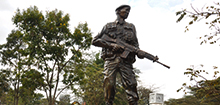
- Research Charter
- Conservation Research Forms
- Research Priorities and Programs
- Priority Ecosystems and Species
- Affiliations and Volunteer Guidelines
- Ecological Monitoring
- Multilateral Environmental Agreements
- Protected Area Management Plans
- Climate Change
- Environmental Impact Assessment
- SPECIES CONSERVATION AND MANAGEMENT DIVISION
- VETERINARY SERVICES DEPARTMENT
- DEPARTMENT OF SPECIES MANAGEMENT
- DEPARTMENT OF CAPTIVE WILDLIFE MANAGEMENT
- CITES IMPLEMENTATION DEPARTMENT
- Community Enteprises
- Community Wildlife Service
- Community projects
- Conservation Forum
- Conservation Education
- Wildlife Security
- SNAKE KEEPING FOR BREEDING AND ECOTOURISM
- National Parks
- National Reserves
- Marine Parks
- Sanctuaries
- Orphanage/Safari Walk
- Hours of Operation
- Interactive Map
- Cashless payment at KWS Parks and Reserves points of access
KWS manages about 8 per cent of the total landmass of the country. This land contains 22 National Parks, 28 National Reserves and 5 National Sanctuaries
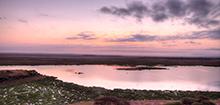
- About Kenya
- Travel Tips
- WHAT TO SEE
- OUR BANDAS & GUEST HOUSES
- OTHER Hotels & Lodges
- Promotions/Deals
- Feedback form
- Investment Procedures
- INVESTMENT OPPORTUNITIES
In Kenya, the environment and tourism have always been inextricably linked, and this is a truly symbiotic relationship
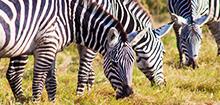
- Beach Management Programme
- Northern Kenya Biodiversity Programme
- Kenya Coastal Development Programme (KCDP)
- Video Gallery
- Photo Gallery
- Press & Media Releases
- Procurement plan 2022-2023 FY
- CONTRACT/TENDER AWARDS
- Annual Reports
Genuine eco-tourism means tourism that has no negative impact on eco-systems, and positively contributes to the destination on a social and environmental level
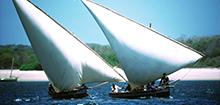
- Conservation Research
- Visitor Guide
- Press & Media Releases
- Lake Nakuru National Park
- Kws Parks/reserves /
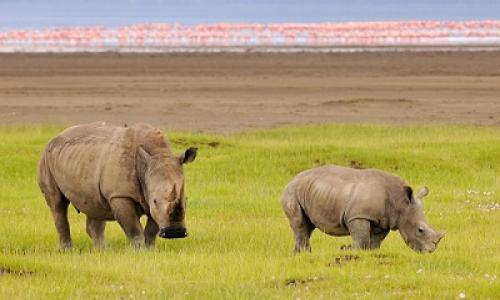
“A beautiful wildlife haven”
On the floor of the Great Rift Valley, surrounded by wooded and bushy grassland, lies the beautiful Lake Nakuru National Park. Visitors can enjoy the wide ecological diversity and varied habitats that range from Lake Nakuru itself to the surrounding escarpment and picturesque ridges. Lake Nakuru National Park is ideal for bird watching, hiking,picnic and game drives.
- Park Activities
How to get there
Attractions.
- Accommodation
- Park Entry Fees
Protected Area Type
What to take with you.
- Drinking water, picnic items and camping equipment if you intend to stay overnight.
- Also useful are: binoculars, camera, hat, sunscreen, sunglasses and guidebooks.
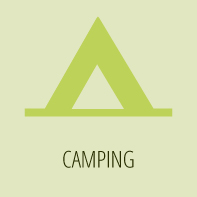
- Roads: The park has a tarmac road connection with Nairobi, a distance of 156 km north west of Nairobi on the main A104 road. The most commonly used route into the park is via the main gate, 4 km from Nakuru Town Centre. It is also possible to enter the park from the main Nairobi Nakuru road at Lanet Gate. The Nderit Gate is used by people accessing the park from Masai Mara or Elementaita.
- Airstrips: The Naishi airstrip services the park for tourism and KWS activities.
- Park Roads: The park has an adequate and well serviced motorable roads that make most parts of the park accessible.
- Park Gates: Lanet and Nderit gates are located on the Larger part of the Park on the Eastern side. Old Main gate is located on the Northern Western side of the Park and still accessible but due to the rise of water level you cannot make a full circuit to connect to the Eastern side. Visitors with tickets are allowed to access both sides of the park without paying extra charges.
- Flamingo (Greater and Lesser) and other water birds including a variety of terrestrial birds numbering about 450 species in total.
- Mammals: 56 different species including white rhinos,waterbuck etc.
- View-points: Lion hill, Baboon cliff and Out of Africa
- Hills: Enasoit, Honeymoon, Lion hill ridge etc
- Waterfalls: Makalia.
- Unique vegetation: About 550 different plant species including the unique and biggest euphorbia forest in Africa, Picturesque landscape and yellow acacia woodlands.
- Cycle with rhino event every September yearly
KWS Self Catering
Privately Owned Lodges
Lake Nakuru lodge
Sarova Lion Hill Lodge
Lake Nakuru Sopa Lodge
The Cliff Hotel
Flamingo Hill Camp
KWS Hostels
Wildlife Clubs of Kenya (WCK) Hostels
Park Entry Fee
* Kindly refer to the Conservation Fees document below for other services and charges.
* Mode of Payment; Pay for your entry to any of our Parks or Reserves via eCitizen government platform
* Create a personal account on the eCitizen Government platform by visiting https://kws.ecitizen.go.ke and make park payments in advance for a fast and convenient park entry.

Park Resources
Phone: +254 20-2664071, +254 20-2664079, +254 20-2671685
Mobile: +254 728355267
Email: [email protected]
Postal Address:
The Senior Warden,
Lake Nakuru National Park,
PO Box 539-20100,
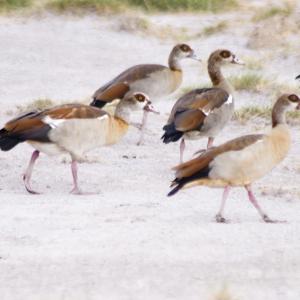
Lake Nakuru National Park safari | Travel guide
Lake Nakuru is one of the Rift Valley lakes at an elevation of 1,754 m above sea level. It lies to the south of Nakuru, in the rift valley of Kenya and is protected by Lake Nakuru National Park, one of the best national parks in Kenya.
The lake’s abundance of algae used to attract a vast quantity of flamingos that famously lined the shore. The park’s main feature is a large, shallow lake supporting great birdlife, including big flocks of pelicans and variable flocks of flamingos.
The lake was once famous for its flamingos, however, since 2012, conditions have become unfavourable for these birds and most have moved to other Rift Valley lakes.
Lake Nakuru is also a UNESCO World Heritage Site and the most famous lake in Kenya. With large bushy green sections, not commonly seen in other Kenyan parks such as Masai Mara national reserve.
Table of Contents
Why visit Lake Nakuru National Park?
Lake nakuru safari.
There are plenty of great things to do in Kenya and one of the Great Rift Valley’s most famous soda lakes, Lake Nakuru offers visitors the chance to witness one of the world’s most spectacular wildlife sights: brilliant pink flamingos as far as the eye can see.
When conditions are right, between one and two million lesser and greater flamingos feed around the shores of the shallow lake, which together with tens of thousands of other water birds.
Those who have been to Lake Nakuru will attest to the park’s beauty with its rich topography of hills, grasslands and forests. There are several easily attained vantage points from which to enjoy wonderful views of the landscape and especially the lake with its undulating pink population of birdlife.
Though the park is not large in size, a visit to Lake Nakuru will be a very full and colorful safari experience.
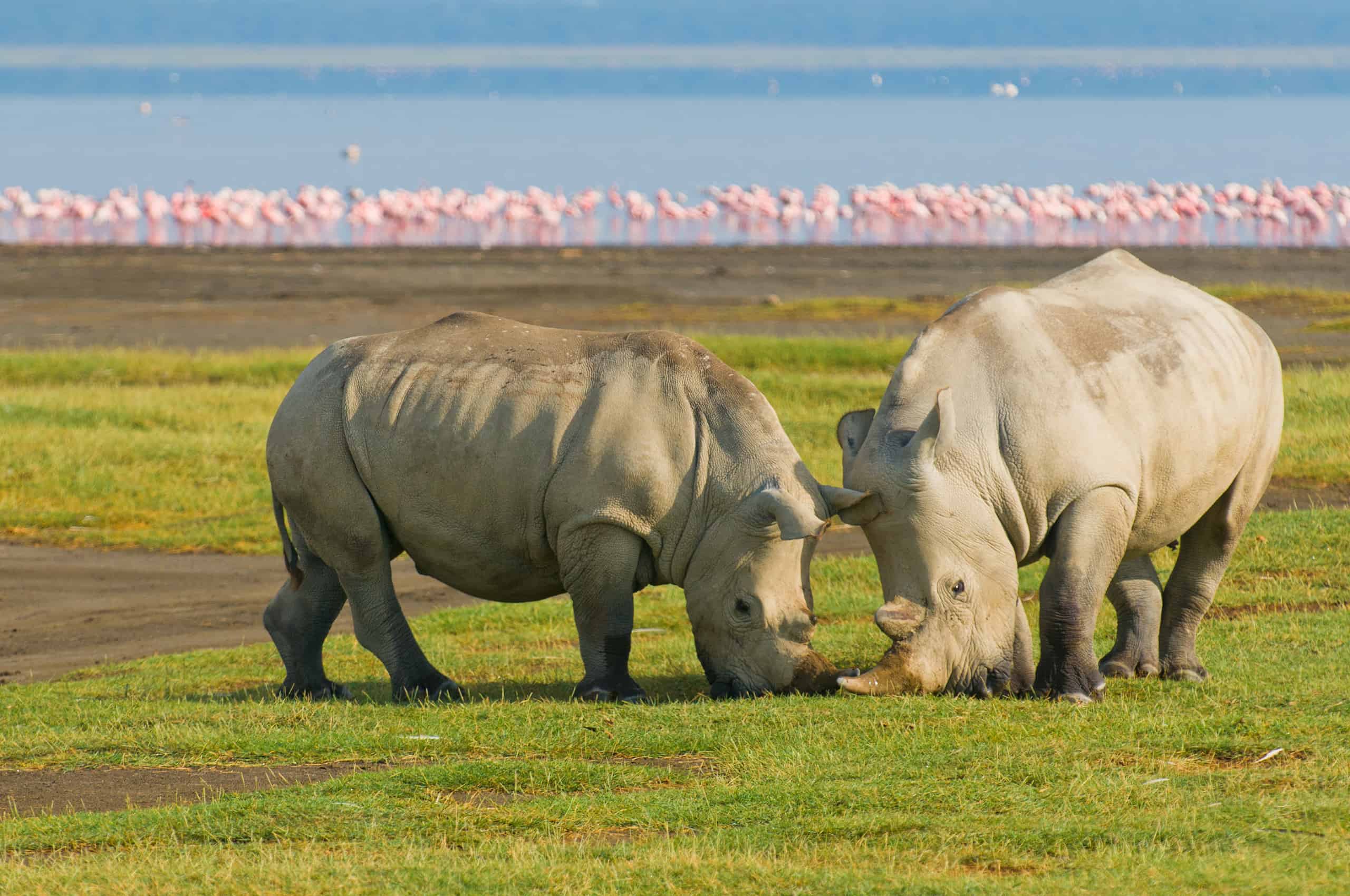
Lake Nakuru safaris are excellent. Declared a national park in 1961, Lake Nakuru covers an area of some 180 km² and its diverse habitats are home to warthog, baboon, waterbuck and large numbers of impala.
Slightly shyer residents include buffalo, Rothschild’s giraffe, eland, the occasional leopard and both black and white rhino. A herd of hippo have their territory in the northern part of the lake.
But that’s only the beginning of what this special park has to offer because the wildlife viewing here is easy and accessible. Lake Nakuru is known for hosting some endangered but beautiful species.
You’re sure to see rare Rothschild’s Giraffe along with white rhino, especially along the lakeshore.Another aspect to the active wildlife viewing here is observing the park’s zebra, hippo, olive baboon, vervet and colobus monkeys, waterbuck and hyena.
Other big safari wildlife to be on the lookout for includes lion, cheetah, leopard and buffalo.The park is fenced to protect the rhino and giraffe, so it can’t support elephants – the only large mammal you won’t find here.
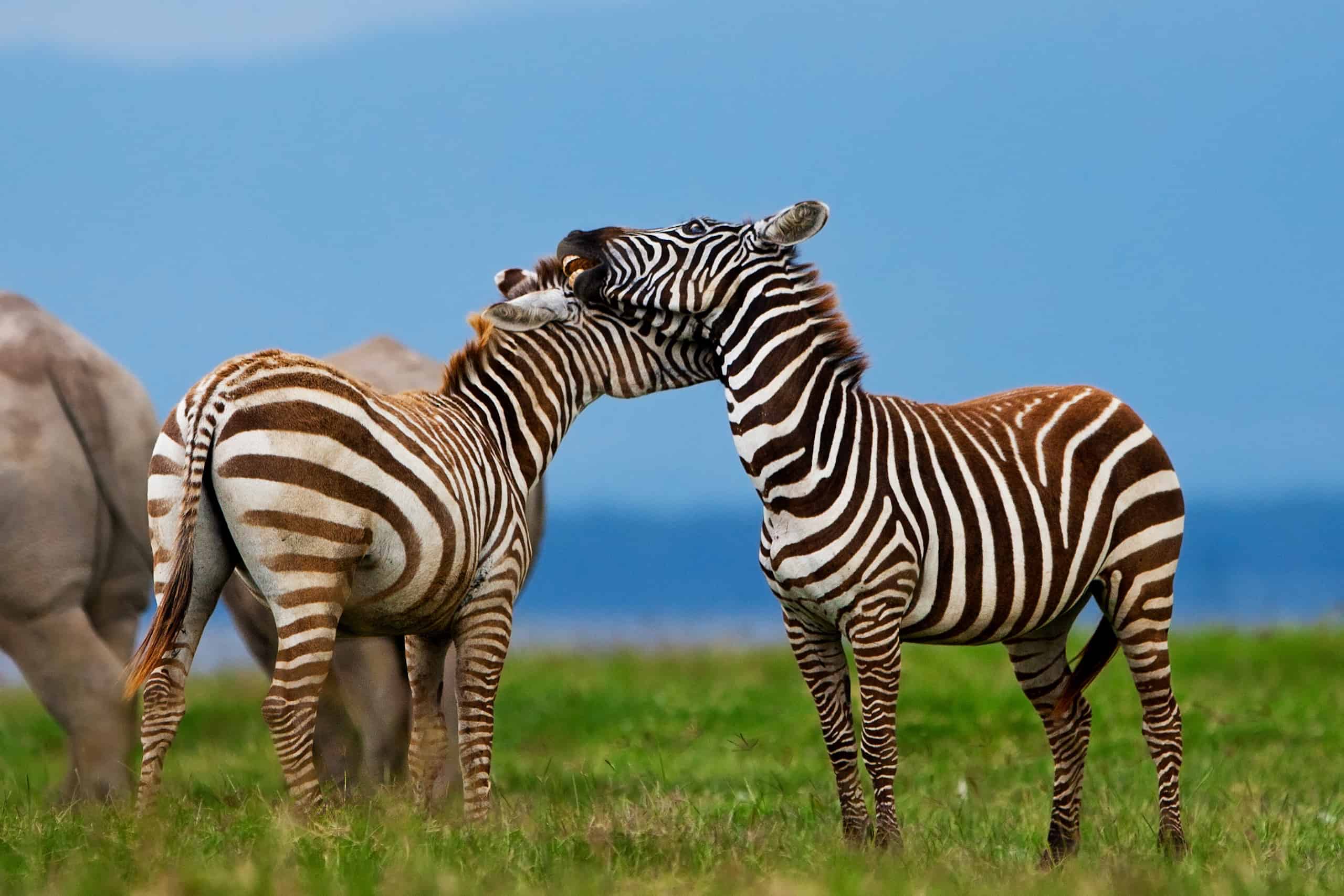
Within a species list of around 400 bird species, Lake Nakuru is an ornithologist’s paradise.
The flamingos are also accompanied by other birdlife – pelicans, cormorants, kingfishers, ostriches, storks as well as herons and eagles. The scene here is bountiful, busy and full of colour.
Moving through the park’s dense acacia forest you’ll likely come upon herds of impala and waterbuck. Also, in the woodlands you may see large pythons hanging from the trees. This is the infamous African rock python that’s capable of swallowing animals whole.
Other activities at Lake Nakuru National Park
Here are some other activities which visitors can consider during their African safari in Lake Nakuru:
- Walking safaris: Explore wildlife and private concessions on foot, an authentic and economical means of exploring wildlife in Lake Nakuru.
- Horseback safari: Like the explorers of old, this is a truly unique way to experience Lake Nakuru without the hum of the safari vehicle by the Flamingo Stables
- Photography safaris: Visitors on a photo safari will be in dreamland at Lake Nakuru where small groups can share a luxury photography tour with like-minded individuals and capture their favourite moments.
- Sightseeing tours: This is best to see the Baboon Cliffs, a lookout in the park as well as the lookout from the movie-set from Out of Africa, Makalia Falls or take a trip to Lake Nakuru Rhino Sanctuary.
Visitors often enjoy combining their safari adventure with some quiet downtime on Kenya’s best beaches , a perfect end to their African adventure.
How to get to Lake Nakuru National Park?
By plane .
International flights arrive in Jomo Kenyatta International Airport (NBO), 15km/9mi southeast of Nairobi for visitors wondering how to get to Kenya .
Lake Nakuru is located 155km/96mi northwest of Nairobi and 5km/3mi from Nakuru town and a Kenya visa will most likely be required to enter the country.
Nakuru is an easy destination by car via a tar road from Nairobi. The most commonly used route into the park is via the main gate. It is also possible to enter the park from the main Nairobi Nakuru road at Lanet Gate. The Nderit Gate is used by people accessing the park from Masai Mara or Elementaita .
Tariffs & Regulations
Entrance fee.
Many factors impact Kenya safari prices including the cost of the park entrance fee. Prices per person per day of USD $60 per adult non resident.
The gates into Lake Nakuru National Park open at 6am and close at 7pm.
Regulations
If you keep to park rules, you can stay with the animals as long as they are not disturbed by your presence.
Accommodation at Lake Nakuru
Accommodation in Lake Nakuru ranges from tented safari camps to eco game reserve lodges.Rates mainly depend on the season and type of accommodation.
Typical accommodation rates range from $200 to $1,000 per person a night and carrying a small amount of Kenyan currency , the Kenya Shilling (KES) is recommended to pay for groceries and smaller items where credit cards aren’t accepted.
Luxury lodges
Lodges are exclusive and luxurious with views amongst the most spectacular in the world along with world-class service, incredible food, all luxury amenities, simply ideal for the perfect honeymoon location.
A luxury option is the Cliff Tented Camp Nakuru and Lake Nakuru Lodge, situated within the National park and offering spectacular views.
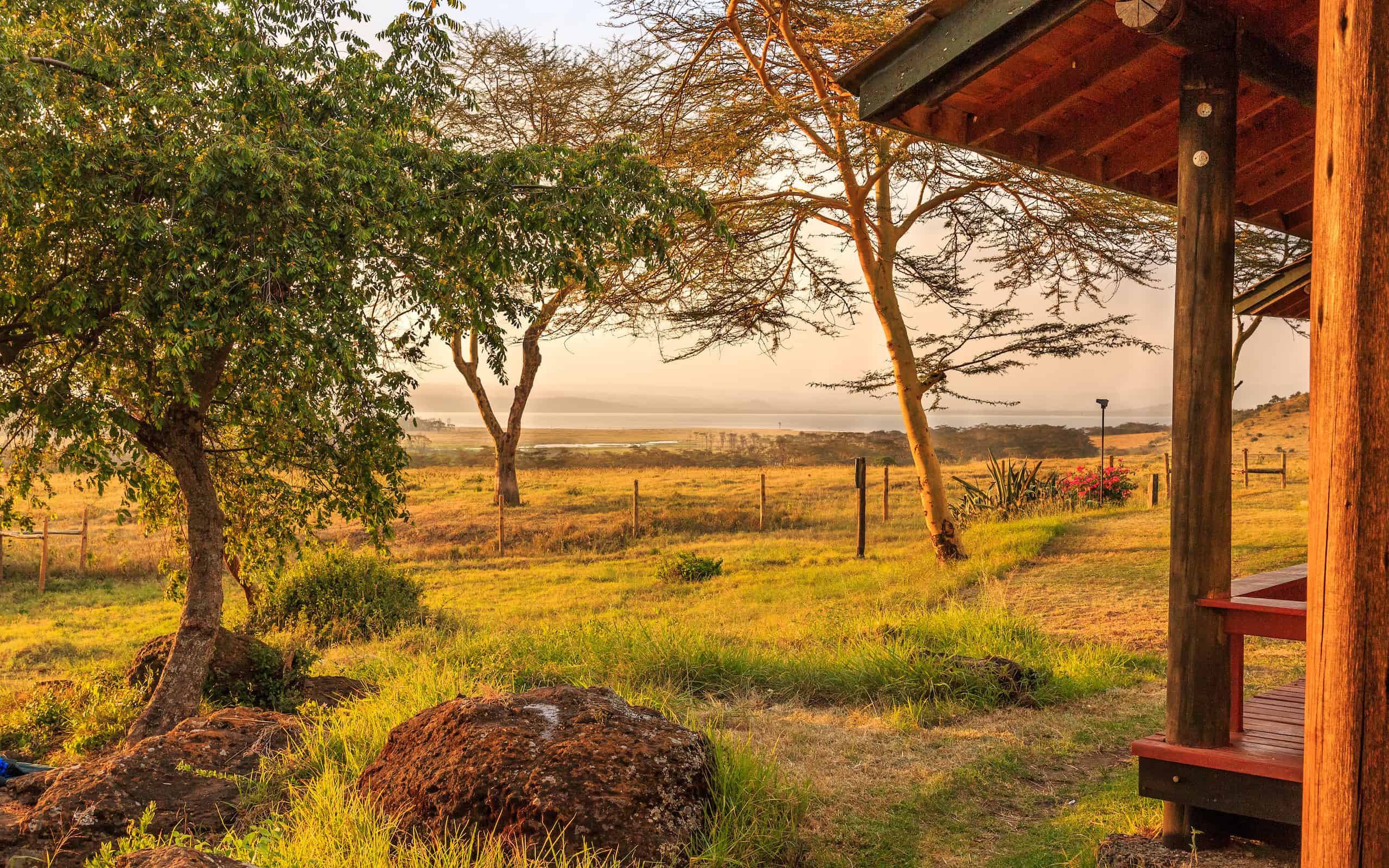
Tented camps
These sophisticated structures are large luxury tents on raised wooden floors with excellent guest services and meals provided, often found overlooking incredible views.
The Sarova Lion Hill Game Lodge is one of the most sought after Rift Valley Lodges in Kenya , best known for offering finest quality services
Campsites
There are a number of affordable camping sites offering cheaper camping options for travellers on a budget including Enjoro campsite in Lake Nakuru National Park.
Campervan
Guests on a self-drive safari with a campervan can make significant savings by sleeping in their vehicle.
Bars/restaurants/amenities
Lodges will typically have all meals and drinks included in the lodge package.
Useful information
Located in the southwest of Kenya , a Kenya safari in Lake Nakuru National Park is often combined with a trip to other Great Rift Valley lakes – Lake Naivasha for example – and other conservation areas such as the nearby Aberdare National Park.
Weather
Lake Nakuru’s climate is mild and temperatures are consistent year-round. Daytime temperatures are pleasant in the mid to upper twenties, although it is much cooler at night. Warm clothing for early morning game viewing is a necessity.
The wettest months are April and May. The rest of the year is relatively dry with some rain throughout.
Best time to go
Understanding the best time to visit Kenya is important as this will impact accommodation, flight prices, availability and the weather that visitors can expect on their safari vacation.
The months most popular for tourist visits to Lake Nakuru National Park are January, February, March, June, July, August, September and October. This is because these are the driest months of the year, so touring the park is more lucrative and enjoyable.
Health
Lake Nakuru is a shallow soda lake in the Rift valley and malaria is present. Apart from bringing antimalarials, the use of DEET-based mosquito repellent and covering up exposed skin in the evening is highly recommended.
Visitors can find further information on Kenya vaccine details here .
Where is Lake Nakuru National Park located?
Lake Nakuru is located 155km northwest of Nairobi and 5km/3mi from Nakuru town. Nakuru is an easy destination by car via a tar road taking a little over 3 hours from Nairobi.
How much is the entrance fee to Lake Nakuru National Park?
USD $60 is the entrance fee per adult
What animals will visitors see?
Visitors to Amboseli will see the flamingo as well as the warthog, baboon, waterbuck and large numbers of impala, buffalo, Rothschild’s giraffe, hippo eland, leopard and both black and white rhino.
THREE WAYS TO PLAN AND BOOK YOUR SAFARI WITH AFRICANMECCA
TRAVEL & OPERATIONS OFFICES
- United States
- United Kingdom
WHEN TO GO TO LAKE NAKURU
Best time & weather to travel to lake nakuru scroll down for details...
- Travel Guide
- Parks Reserves
- Lake Nakuru
- When Best Time To Visit
SAFARI PRICES
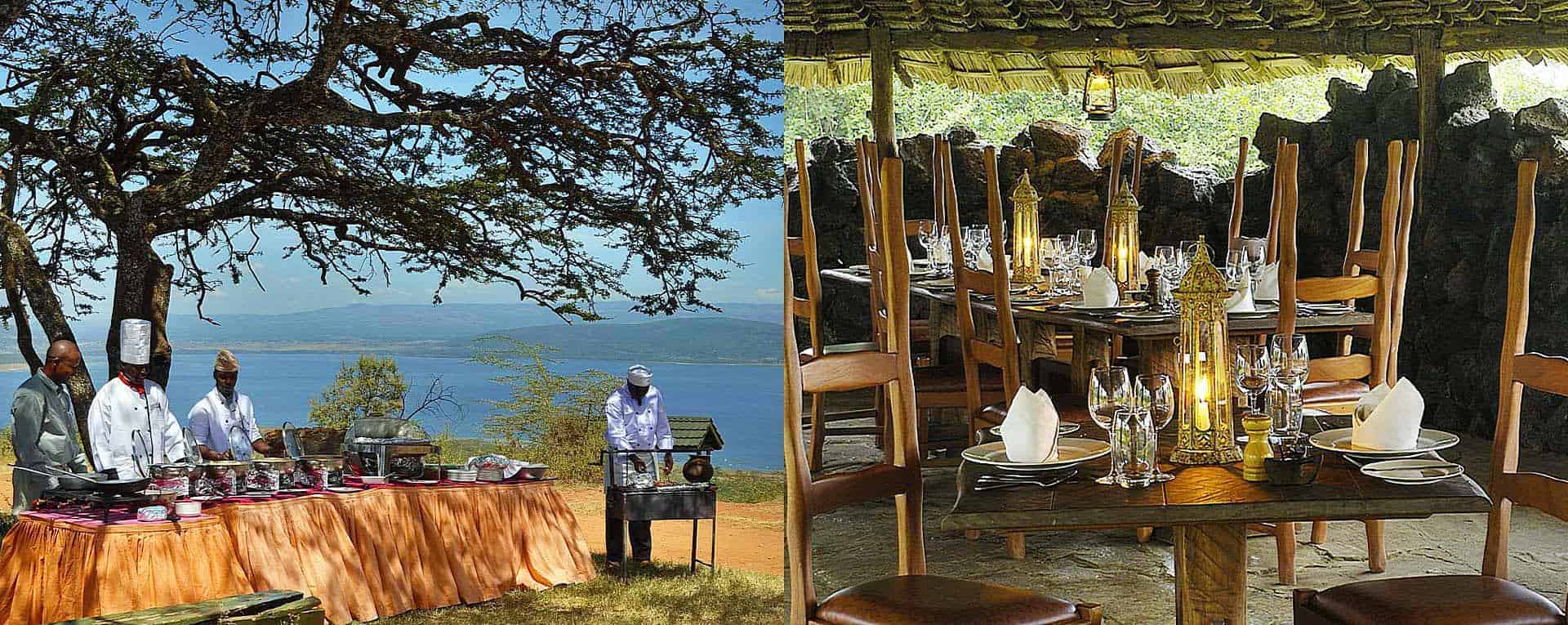
KENYA SAFARI PRICES
Read More +
Where to stay in lake nakuru.
Accommodation choice in Lake Nakuru is an important part of your holiday in Kenya. Flamingo Hill Camp and Mbweha Camp offer you a deluxe experience while Lion Hill Lodge focusses on a value guests.
SAFARI & TOUR IN LAKE NAKURU
Game drive is the main activity. Foragers, grazers, hunters and scavengers all play their roles in the natural existence of Lake Nakuru. The park also has over 450 birds species including the flamingos.
GUIDE ON LAKE NAKURU PARK
Lake Nakuru in central Kenya is part of the Great Rift Valley Lake System that is listed as a UNESCO World Heritage Site. The prominent wildlife in the park includes 56 mammals and 450 bird species.
AFRICANMECCA REVIEWS
Jambo Raza, The Lake Nakuru outing was great! We saw lots of pelicans, some flamingos, both black and white rhino... We've already recommended a Kenya safari to friends and relatives. Thanks again
Scott Aaronson - Associate Professor, M.I.T - Boston, United States
Raza, it was the vacation of a lifetime, again, thanks so much. From the flamingo of Lake Nakuru and the foot hills of Masai Mara, we saw the best of what Kenya safari has to offer.
Jamie Davis & Liudmila Kondakova - San Francisco, California, United States
Dear Altaf, We would like to thank your team for such a well planned and wonderful holiday. Kenya is such an amazing country, and we felt that the itinerary you helped us set up was perfect...
Wee Siang Neo & John Lau - Singapore
Jambo Altaf, As usual the program went like clockwork and it was a wonderful holiday in Rift Valley & Masai Mara. Lake Nakuru is absolutely stunning and exceeded my expectations..
Simon Woodlock, Chief Financial Officer, Synovate - Surbiton, United Kingdom
Thank you so, so much for all of your help in planning our amazing safari to Lake Nakuru, Masai Mara, and Nairobi. Everything went so smoothly. Our tour guides were the best!!
Joanne Wright - Pittsburgh, Pennsylvania - United States
Jambo Altaf and Raza! We are back on earth now after our fabulous honeymoon. This is to say THANK YOU so much for organising a week in Kenya that we will never forget.....!
Dr Krina Zondervan, Oxford University - United Kingdom
We were extremely pleased with our itinerary. All those elephants and giraffes just posing and asking to have their pictures taken. Thank you for planning one of the best trips I have ever taken.
Professor Donald S. Kisiel - Biology Department Suffolk County Community College - New York, United States
East africa safari booking trip idea for lake nakuru in central kenya, best safari planning ideas & trip experiences for kenya, 1. how to plan kenya safari trips (summary), 2. wildlife safari trip planning guide for kenya, 3. private & tailor-made safaris trip planning guide for kenya, 4. honeymoon safaris trip planning guide for kenya, 5. family safaris trip planning guide for kenya, 6. luxury safaris trip planning guide for kenya, 7. photo safaris trip planning guide for kenya, 8. cultural safaris trip planning guide for kenya, 9. primate safaris trip planning guide for kenya, 10. hike, trek & bush walk safaris trip planning guide for kenya, 11. birding safaris trip planning guide for kenya, 12. horseback riding safaris trip planning guide for kenya, 13. balloon safaris trip planning guide for kenya, 14. wedding safaris trip planning guide for kenya, 15. bush & beach safaris trip planning guide for kenya.
Kickstart Your Safari Planning
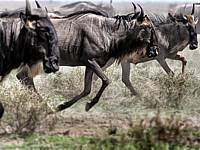
Find Kenya Safaris & Costs By Safari Tier Experiences
Lake Nakuru Room Rate & Hotel Price Guide For Kenya
Kenya Safari Reviews For Lake Nakuru National Park
Lake Nakuru National Park Map Location In Kenya
PHOTO GALLERY
Images & Pictures For Lake Nakuru Safari Park In Kenya
VIDEO GALLERY
Safari & Accommodation Videos For Lake Nakuru Park
ARE YOU PLANNING TO BOOK AN AFRICAN SAFARI TO LAKE NAKURU IN KENYA?
Do You Need Knowledgeable, Experienced & Specialist Guidance For Your Travels In Lake Nakuru ? Let Us Help Plan Your Trip Itinerary Correctly
LAKE NAKURU CAMPS & LODGES
Scroll and view more Lake Nakuru safari accommodations in Kenya
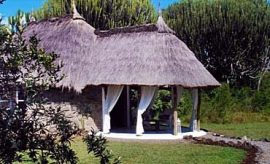
Mbweha Camp
Explore more on lake nakuru national park in kenya, safari tier ratings.
Understand Safari Tier Ratings & Experiences In Kenya
KENYA PARKS & RESERVES
Lake Nakuru National Park & Safari Planning Guide
KENYA LODGES & CAMPS
Guide For Lodges & Camps In Lake Nakuru
BEST TIME TO VISIT KENYA
Top 10 Trip Reasons For Kenya Vacations & Holidays
HAVE YOU VISITED LAKE NAKURU FOR AN AFRICA SAFARI IN KENYA?
Write A Travel Or Tourist Trip Review To Share Your Experiences
KENYA TRIP IDEAS
Africa safari prices.
Check Our Africa Travel Guide
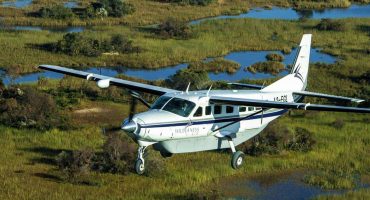
Baggage Guidance & Restrictions On Flying Safaris In Africa
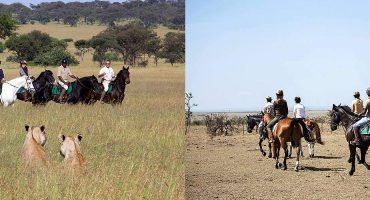
Masai Mara Horseback Riding Safari In Kenya With AfricanMecca

Times Square New York Hosts Kenya Tourism Board & Wilderness Safaris Meet Up
- Company Profile
- Why Travel With Us
- Our Safari & Tour Team
- Tier Ratings
- Awards & Press
- Customer Reviews
- SEARCH For Africa - Sustain & Conserve
- Travel Agent Support
- Jobs & Careers At AMS
- Newsletter Signup
- Contact Details
- Tanzania Travel Guide
- Kenya Travel Guide
- Uganda Travel Guide
- Rwanda Travel Guide
- Botswana Travel Guide
- South Africa Travel Guide
- Zambia Travel Guide
- Zanzibar Travel Guide
- Safari Trip Ideas
- Beach Trip Ideas
- Mountain Climb Trip Ideas
- Itinerary Trip Ideas
- Explore Park & Reserves
- Accommodations In Africa
- Read Trip Reviews
- View Photo Gallery
- View Video Gallery
- Read Our Blog
- Safari Prices & Itineraries
- Beach Prices & Itineraries
- Trek Prices & Itineraries
- City & Day Tours Prices
- Room Rate Guide
HOW TO CONTACT US
- You are here:
- Countries & Parks
- Kenya Parks
Lake Nakuru National Park
- Best Time To Visit

- Weather & Climate
- Getting There
- Malaria & Safety
Best Time To Visit – Lake Nakuru NP

Anthony is a renowned Africa expert and author of many Lonely Planet guidebooks, including the guide to Kenya.
Anthony is a renowned Africa expert and author of the Lonely Planet guide to Kenya.
Anthony is the author of the Lonely Planet guide to Kenya.
Lake Nakuru National Park offers good wildlife viewing throughout the year, but the best months are from June to February. The rains might interfere with game drives and road conditions can be poor in the wettest months (April and May). However, the reorientation of some tracks to avoid the lake’s rising water levels has made trail conditions more consistent.
June to February – Dry Season
- Days are sunny and dry, but it rarely gets hot
- Short grass and few water sources make animals easy to spot
- The park gets very crowded and good sightings tend to attract a lot of vehicles
Wildlife Photos

March to May – Wet Season
- It is generally less crowded and low-season rates may apply
- The park is green, the skies are clear and there are lots of flowers
- Newborn animals can be seen
- Best time for bird watching with migratory birds present
- April and May can be very wet and rain might interfere with game drives
- Grass is long and animals are more difficult to spot

Best Time To Go by Major Park
- Amboseli National Park Amboseli National Park Excellent "> Jan J Excellent "> Feb F Good "> Mar M Fair "> Apr A Fair "> May M Excellent "> Jun J Excellent "> Jul J Excellent "> Aug A Excellent "> Sep S Excellent "> Oct O Fair "> Nov N Good "> Dec D
- Buffalo Springs NR Buffalo Springs National Reserve Excellent "> Jan J Excellent "> Feb F Good "> Mar M Fair "> Apr A Fair "> May M Excellent "> Jun J Excellent "> Jul J Excellent "> Aug A Excellent "> Sep S Good "> Oct O Fair "> Nov N Good "> Dec D
- Lake Nakuru National Park Lake Nakuru National Park Excellent "> Jan J Excellent "> Feb F Good "> Mar M Fair "> Apr A Fair "> May M Excellent "> Jun J Excellent "> Jul J Excellent "> Aug A Excellent "> Sep S Excellent "> Oct O Excellent "> Nov N Excellent "> Dec D
- Masai Mara NR Masai Mara National Reserve Good "> Jan J Good "> Feb F Fair "> Mar M Fair "> Apr A Good "> May M Excellent "> Jun J Excellent "> Jul J Excellent "> Aug A Excellent "> Sep S Excellent "> Oct O Fair "> Nov N Fair "> Dec D
- Samburu National Reserve Samburu National Reserve Excellent "> Jan J Excellent "> Feb F Good "> Mar M Fair "> Apr A Fair "> May M Excellent "> Jun J Excellent "> Jul J Excellent "> Aug A Excellent "> Sep S Good "> Oct O Fair "> Nov N Good "> Dec D
- Tsavo East National Park Tsavo East National Park Excellent "> Jan J Excellent "> Feb F Good "> Mar M Fair "> Apr A Fair "> May M Excellent "> Jun J Excellent "> Jul J Excellent "> Aug A Excellent "> Sep S Excellent "> Oct O Fair "> Nov N Good "> Dec D
- Tsavo West National Park Tsavo West National Park Excellent "> Jan J Excellent "> Feb F Good "> Mar M Fair "> Apr A Fair "> May M Excellent "> Jun J Excellent "> Jul J Excellent "> Aug A Excellent "> Sep S Excellent "> Oct O Fair "> Nov N Good "> Dec D
Want To Visit Lake Nakuru NP?
808 Lake Nakuru Safaris
- Lake Nakuru Budget Safaris
- Tour Operators for Lake Nakuru
Safari Tours to Lake Nakuru NP

6-Day Iconic Budget Kenya Classic Safari on Landcruiser
$902 to $1,155 pp (USD)
Kenya: Shared tour (max 7 people per vehicle) Budget Lodge & Tented Camp
You Visit: Nairobi (Start) , Masai Mara NR, Lake Nakuru NP, Amboseli NP, Nairobi (End)
Lenchada Safaris
4.9 /5 – 731 Reviews

4-Day Lake Nakuru & Masai Mara Safari - Shared Jeep Tour
$660 to $836 pp (USD)
Kenya: Shared tour (max 7 people per vehicle) Budget Tented Camp & Hotel
You Visit: Nairobi (Start) , Masai Mara NR, Lake Nakuru NP, Nairobi (End)
Wild Race Africa
4.6 /5 – 69 Reviews

4-Day Masai Mara / Lake Nakuru Budget Shared Safari
$480 to $705 pp (USD)
Kenya: Shared tour (max 8 people per vehicle) Budget Tented Camp & Hotel
Bienvenido Kenya Tours and Safaris
4.3 /5 – 77 Reviews
Change location
- UK / International
- Call toll-free from 9am EDT
- 617-223-4521 617-223-4534 or
- REQUEST A QUOTE
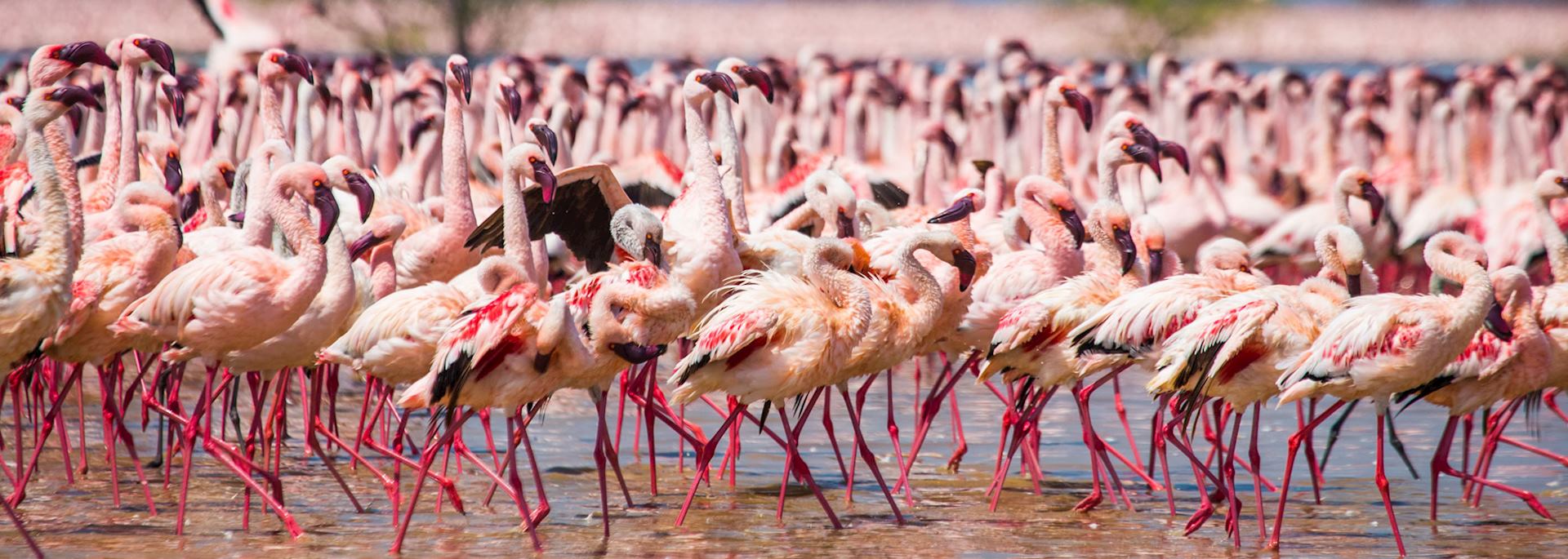
Visit Lake Nakuru, Kenya
- Accommodation
The first thing you will see approaching Lake Nakuru is a roseate cloud along the shoreline.
Lake Nakuru's famous pink flamingos
As you approach the pink mass it turns into the shapes of birds, millions of flamingos. It is one of the sights you associate with East Africa and a spectacle of immense beauty.
The waters of Lake Nakuru are rich in blue-green algae and diatoms that lesser flamingos feed on. Together with them, it is possible to see up to 400 species of birds: hundreds of pelicans, spoonbills, yellow-billed storks and more.
Wildlife of Lake Nakuru
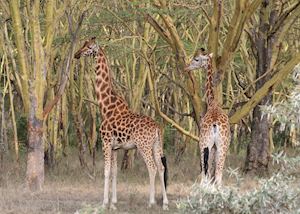
The lake and surrounds make an ideal overnight stop en route to the Mara or the Aberdares or a perfect spot for a picnic lunch.

Start planning your tailor-made trip to Lake Nakuru by contacting one of our Kenya specialists
- 617-223-4521 617-223-4534
- Make an inquiry
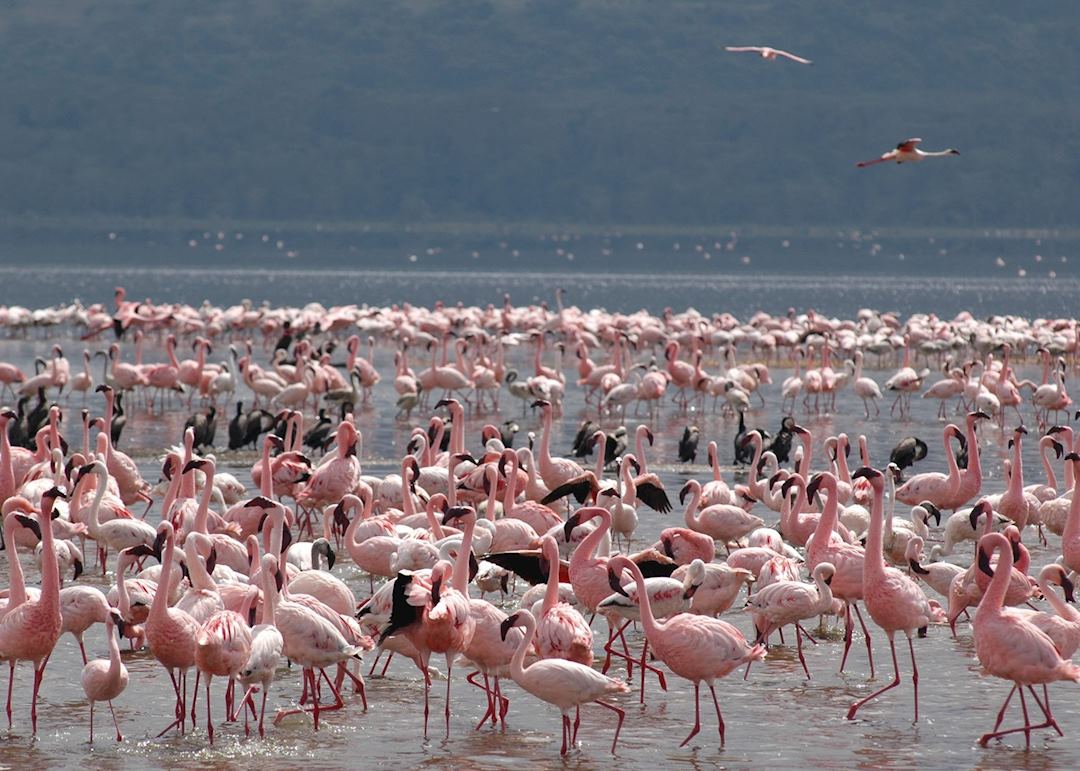
Start planning your trip to Lake Nakuru
Map of lake nakuru, places & hotels on the map, places near lake nakuru.
- Lakes of the Great Rift Valley less than 5 miles away
- Lake Naivasha 34 miles away
- Sosian Lodge 62 miles away
- Ol Pejeta Conservancy 62 miles away
- The Laikipia Plateau 69 miles away
- Nairobi 81 miles away
- Loisaba Wilderness Conservancy 89 miles away
- Mara Naboisho Conservancy 90 miles away
- Mara North Conservancy 91 miles away
- Loita Hills 91 miles away
- Ol Lentille Conservancy 94 miles away
- Il Ngwesi Group Ranch 98 miles away
- Lewa Wilderness Conservancy 103 miles away
- Masai Mara National Reserve 108 miles away
- Borana Ranch 109 miles away
- Karisia Hills 112 miles away
- Shompole Magadi 118 miles away
- Samburu National Reserve 121 miles away
- Matthews Mountain Range 137 miles away
- Lake Victoria 137 miles away
- Shaba National Reserve 142 miles away
- Meru National Park 148 miles away
- The Parks & Reserves of Northern Kenya 152 miles away
- Amboseli National Park 173 miles away
- The Chyulu Hills 195 miles away
- Tsavo West National Park 247 miles away
- The Parks & Reserves of Southern Kenya 247 miles away
- Tsavo East National Park 252 miles away
- Kenya's Northern Frontier 296 miles away
Photos of Lake Nakuru
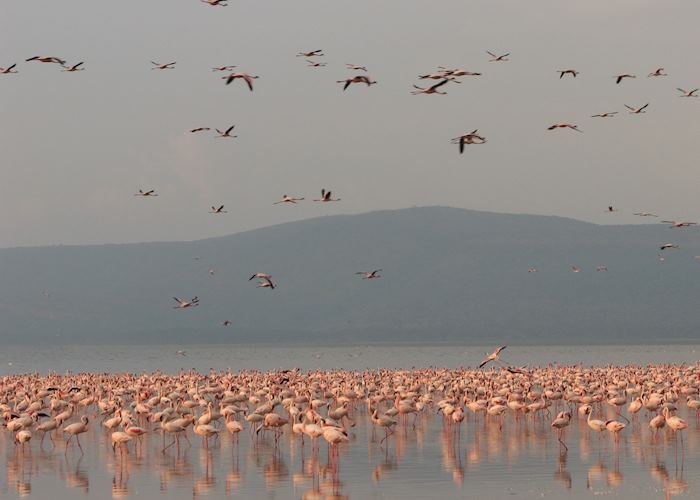
Our expert guides to exploring Lake Nakuru
Written by our specialists from their own experiences of visiting Lake Nakuru, these guides will help you make the most of your time there. We share both our practical recommendations and the best ways to appreciate Lake Nakuru at its best.
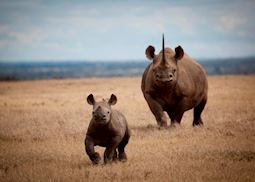
The Big Five in Kenya
Home of the Masai Mara and Lewa Wilderness Conservancy, you'll have countless opportunities to spot the Big Five in Kenya. With a range of first-class lodges, you can embark on traditional game drives and walking safaris in search of these magnificent animals.
Accommodation choices for Lake Nakuru
We’ve selected a range of accommodation options for when you visit Lake Nakuru. Our choices usually come recommended for their character, facilities and service or location. Our specialists always aim to suggest properties that match your preferences.

Mbweha Cottages
Is Lake Nakuru Worth Visiting? NO & Here’s Why
When planning to come to a Kenyan Safari, one of the destinations on your list might include Lake Nakuru National Park. Being a small park and a bit of a distance from the capital, Nairobi, you may have wondered if Lake Nakuru National park is worth visiting.
Lake Nakuru is only worth visiting if you have not yet gone to the Masai Mara or one of the other larger parks. This is because Lake Nakuru National park is a small park which you can view in about 3 hours. It will feel anticlimactic if you visit it after spending several days in one of the other larger national parks like the Masai Mara and the long drive to get there may not be with it for you. In this article, I will talk about when I think Lake Nakuru is not worth visiting. I will also give the pros and cons of the park to help you figure out if this park is for you. It’s been a while since I visited this park so to improve the quality of this article, I looked through a number of forums and also made a call to the Kenya Wildlife Service to get their take as well.
- Fly to Masai Mara – Don’t Drive (& Here’s Why)
- Why You Should NOT Wear Shorts in Tanzania
- Is Masai Mara in Nairobi?
- Why You Shouldn’t Take a Taxi From Nairobi to Masai Mara
- Is Masai Mara Safe For Tourists?
Visit Lake Nakuru Before Going to the other parks
Lake Nakuru National Park, being a smaller park is most worth visiting before going to bigger parks like the Masai Mara . It will give you a good taste of the wildlife you expect to see at the Mara and will create a sense of expectation for the days ahead.
Conversely, if you visit this park after being in the Mara for 3 or 4 days, the few hours you will spend there will feel like a waste compared to how long it would take you to drive up to Lake Nakuru from the Mara.
Should I spend more time at the Mara or share it with lake Nakuru?
If you are torn in between more time at the Mara vs going to Lake Nakuru, always go for the Mara. You will get more bang for your buck and time spending an extra night at the Mara. Part of my reason for saying this is because the long drive from the Mara to lake Nakuru will mainly comprise of just roads and nothing interesting to see along the way. In the end you just spend about 3 hours in lake Nakuru National Park after having spent about five hours on the road to get there.
Pros of Lake Nakuru National Park
Black and white rhino.
Lake Nakuru national park is home to both the black and white rhino. This makes it an attractive tourist destination because of these rare and endangered species
Although the population of flamingos has been dwindling there over the years, lake Nakuru national park is one of the few places in Kenya where you can find them. This makes it popular for tourists who want to see flamingos
Near Hell’s Gate National Park
Lake Nakuru national park is around two hours away from the Hell’s Gate National Park. Compare this with the 5 hours that it would take you to get to lake Nakuru from Masai Mara and Hell’s Gate feels quite near. With beautiful gorges that provides an interesting and challenging hike, Hell’s Gate national park is worth visiting if you will be visiting lake Nakuru as well.
Views of Rift Valley on your way there
If you will be driving from Nairobi to lake Nakuru National Park you will enjoy a lot of beautiful views of the Great Rift Valley and you will get to stop at one of the many viewpoints on the escarpment. For me, a view of the Rift Valley from this vantage point is always the highlight of any of my trips to the Rift Valley.
Cons of Lake Nakuru National Park
Lake Nakuru national park is much smaller than many of the bigger parks like the Maasai Mara. You can easily view most of the park in one day and this makes the park less attractive for tourists who want to spend several days in one National Park
Won’t get to see the big five
While lake Nakuru National Park hosts rare and endangered species like the rhino, it has much fewer numbers of some of the other big 5 like the leopard and the lion
Not on your way to the Mara
To get to lake Nakuru National Park you would need to detour from the way that takes you to the Maasai Mara. The detour would take you about 2 hours away from the normal route to the Maasai Mara . This means that you will have an extra four hours on top of the 5-hour drive from Nairobi to the Mara .
Complaints on some of the accommodations
When doing research for this article I found a number of people who complained about the quality of accommodations in and around the National Park. While the particular complaints were posted a few years ago, it would be a good idea to check if the conditions are the same before booking your rooms there.
Alternatives to Lake Nakuru National Park
Well the lake Nakuru national park is unique here are a few alternatives that would give you a relatively similar experience and may have either greater diversity of wildlife or better proximity to Nairobi.
Nairobi National Park
this park is best for anyone who is near Nairobi (Kenya’s Capital City and where you will land when arriving in Kenya) and does not have the time to travel to some of the bigger national parks. It is located just a few minutes from Nairobi’s Central Business district and is perfect for a game drive that lasts a few hours.
Amboseli National park
The amboseli is about 5 hours away from Nairobi but it provides a great diversity of animals and it’s bigger than lake Nakuru National Park so you can spend a day or two compared to the few hours that you would spend in lake Nakuru. It gives you the opportunity to view more of the Big five than Nakuru and if you’re lucky you might catch a glimpse of mount Kilimanjaro.
Keep in mind that we may receive commissions when you click our links and make purchases. However, this does not impact our reviews and comparisons. We try our best to keep things fair and balanced, in order to help you make the best choice for you. As an Amazon Associate, I earn from qualifying purchases.
Antony Njoroge
Hi, I'm Antony & I'm from Kenya. I love traveling around Kenya when I get off from work and this website is a great way for me to share my local knowledge and tips that will help you travel well in East Africa. Having lived in East Africa my whole life, I share my personal experiences and knowledge with the goal of helping you optimize your East African Safari and make it an unforgettable expereince.
Recent Posts
Internet & WiFi in Kenya (A Complete Tourists' Guide)
If you are planning to visit Kenya any time soon, you might have wondered if Kenya has Internet and whether WIFI is easy to find. I have lived in Kenya all my life and I would love to answer this...
Is Mt Kilimanjaro Active? (And Should You Be Worried?)
If you are planning to visit Mt. Kilimanjaro like I am, you must have been doing a lot of research about your climb. During your research, you might have stumbled upon the fact that Kilimanjaro is a...

Home » Why Visit Lake Nakuru
Why Visit Lake Nakuru
Why Visit Lake Nakuru? Lake Nakuru National Park is located in the west central part of Kenya in the city of Nakuru; the park protects Lake Nakuru which is one of the lakes in the rift valley at an altitude of 174 meters above sea level.
Planning to visit Lake Nakuru national Park, here are 10 reasons why you should put Lake Nakuru at the top of your list.
Rhinos in Lake Nakuru National Park
Lake Nakuru National Park is home to a rhino sanctuary where 80% are white rhinos and 20% black rhinos. On your safari to Lake Nakuru National Park, you will witness all these rhinos grazing freely on the savannah plains.
You will also see other animals including the rare Rothschild giraffe and many birds including flamingos. Rhinos are enormous mammals, second only to elephants, they are also part of the big five. Both white and black rhinos need water to survive, so they need to be near a body of water at all times, while white rhinos forage in grasslands.
Pink flamingos in Lake Nakuru National Park
Lake Nakuru National Park is famous for its huge population of pink flamingos including lesser and greater flamingos, these flamingos congregate on the shores of Lake NAKURU to feed on the cyanobacteria that live in its alkaline waters.
Lake Nakuru National Park is a UNESCO World Heritage Site and serves as a key stopover and breeding ground for many species of birds. The park is home to two species of flamingos in Africa, the lesser and greater flamingos, which belong to the Phoenicopteridae family of brightly colored wading birds that live in alkaline and saline lakes and lagoons.
Flamingos usually feed on insect larvae and algae that give them their pink hue, the high waters of Lake Nakuru reduce the ideal breeding and feeding ground for the birds.
Baboon Cliff
Baboon Cliff is located in the northwestern region of Lake Nakuru National Park; the park is famous for its friendly baboon families that you will be able to see during your Kenya Baboon Cliff Safari. The Baboon Cliff is also a great place to view Lake Nakuru.

Makalia Falls
Lake Nakuru National Park is blessed with rocky ridges that are elevated high above the park level to provide inimitable views of Lake Nakuru, birds, animals and the surrounding area. Makalia Falls is a small waterfall on the Makalia River known to be seasonal and flows into Lake Nakuru joined by two other rivers which are the Enderit and Njoro rivers.
Bird watching
Lake Nakuru National Park is a bird sanctuary, making it a great place to visit for a bird watching safari in Kenya, the park is home to over 500 species of birds, including critically endangered species, near endemic species and globally threatened species. These birds include the whooping crane, white-backed vulture and Rueppell’s griffon. Vulnerable species include the Abyssinian thrush, griffon vulture, crested vulture, spotted eagle and imperial eagle. Threatened species include, among others, the macaque duck, lesser flamingo, black-tailed godwit, great snipe, bateleur, crowned eagle, pallid canyon, European roller, sooty falcon, and gray-crested plover.
Flamingos in Lake Nakuru National Park

Game viewing in Lake Nakuru National Park
Lake Nakuru National Park is one of the best wildlife destinations in Kenya. It hosts a variety of animals including rhinos and the rare Rothschild giraffe. Game viewing in Lake Nakuru National Park is done on safari with a well-trained guide. Some of the animals to look out for include rhinos (black and white rhinos). Rothschild giraffes, Cape buffalo, spotted hyenas, zebras, gazelles, leopards among others.
Lake Nakuru National Park Night Drives – refers to special safaris held at night. You will be able to see animals such as leopards, hippos, lions and more with the help of a reflector. Tourism
Hiking is an amazing experience in Lake Nakuru National Park. It takes you to Malaika Falls, this trek is strenuous but gives you the required physical exercise and hiking experience.
Malaika Falls is located on the Malaika River in the northern part of Lake Nakuru National Park. The hike offers you scenic views of the place and a beautiful cool breeze from the waters. That fall over the cliff up to 10 meters high, Top 10 Reasons to Visit Lake Nakuru
Horseback riding
Horseback riding in Lake Nakuru National Park is an exceptional safari activity. Offered outside the park at a 3rd party location at the flamingo stables located on the perimeter of Lake Nakuru. The Horseback riding offers you close encounters with animals as you wander outside the national park. Top 10 Why Visit Lake Nakuru
Boat safari
Boat safaris are a great activity in Lake Nakuru National Park. This safari is done on a small boat on Lake Nakuru with a capacity of 7 to 8 people. This activity offers you the opportunity to enjoy beautiful views of the lake, many animals and waterfowl including flamingos.

Lake Nakuru National Park offers great camping opportunities. The bushy vegetation gives you the best camping in Kenya and a great place to set up your tent. While camping, you will enjoy the fresh lake breeze and also see animals that come close to the tent.
Share article:
Book your safari now
Find the best Africa safari tour itinearies that you may like as you plan your African safari to Uganda.

The East African Rift Valley

The Old Main Gate of Lake Nakuru

Lake Nakuru National Park in July

Lake Nakuru National Park in June
How we work.
To offer you the best service, we ought to be very consistent in doing things the right and timely way.
We carefully listen
When you inquire with us, we shall carefully listen to your requests and advise you accordingly.
We shall then suggest a few safari options that can match your requests and make ammends where need be.
We tentatively reserve
We will tentatively reserve your booking while we discuss through options or any possible changes.
Talk to our travel experts. Call us and we discuss great ideas...
You can reach out to our African travel experts by phone, schedule for a video meeting or send us an email for quick feedback.

Content Search
Kenya + 4 more
Eastern Africa: Heavy rains and flooding Flash Update #1 (3 May 2024)
Attachments.

• Heavy rains and floods have affected more than 637,000 people, including 234,000 displaced, mainly in Kenya, Burundi, Somalia, Tanzania, Rwanda, and other parts of Eastern Africa.
• Tropical Cyclone Hidaya is expected to bring heavy rains to the coastal areas of Kenya and Tanzania Humanitarian partners are monitoring the situation, ready to respond.
• Governments and humanitarian partners are working closely to conduct search and rescue and providing lifesaving assistance in the affected countries.
• Weather forecasts indicate heavy rainfall, of more than 200 mm, is expected over some parts of central and western Kenya and central and north-western Somalia
SITUATION OVERVIEW
The impact of El Niño-induced heavy rains and flooding during the March to May rainy season have been devastating across the Eastern Africa Region. Torrential rains and flooding (both riverine and flash floods) in Burundi, Kenya, Somalia, Rwanda and Tanzania have resulted in the loss of lives, displacement, and destruction. Weather forecasts indicate increased rains in the coming few days as heavy rainfall, of more than 200 mm, is expected over some parts of central and western Kenya and central and north-western Somalia, according to the Intergovernmental Authority on Development (IGAD) Prediction and Applications Centre for Eastern Africa. Tropical Cyclone Hidaya, which has formed over the South Indian Ocean, is likely to hit the coastal areas of Tanzania and Kenya. It will likely bring heavy rains and strong winds in Mtwara, Lindi, and Pwani (including the Mafia Islands), Dar es Salaam, Tanga, Morogoro, Ugunja, Pemba regions and neighboring areas in Tanzania. Humanitarian partners are monitoring the situation to be prepared for any needed response.
In Kenya , at least 210 people have lost their lives, 164 injured, 72 are missing, more than 205,000 people have been affected including 194,305 people who have been displaced, according to the National Disaster Operations Centre as of 3 May. Landslides and mudslides have occurred in Muranga and Nakuru counties. In Nakuru, the mudslide that occurred in Mai Mahiu on 29 April has claimed 52 lives as of 2 May. Search and rescue operations are still ongoing in Nakuru, Nairobi, Kirinyaga, Homa Bay and Tana River.
In Burundi , torrential rains have affected more than 179,200 people and forced more than 31,200 people to move from their homes due to flooding since January 2024. While 80 per cent of families in the country make a living from agriculture and related activities, 23,109 families reported having lost their crop fields. Estimates from the Food Sector indicate that nearly 40,000 hectares, which is about 10 per cent of the country's crop area for the 2024 agricultural season. The floods and the rise of Lake Tanganyika contribute to the deteriorating access to water and sanitation in the localities of Bujumbura Mairie, Mutimbuzi and Rumonge where cholera has been endemic since January 2023. In recent days, cases of cholera have significantly increased in these areas at high risk of occurrence of diseases with high epidemic potential including measles, malaria, in addition to cholera.
In Rwanda , heavy rains and floods killed 14 people in Nyanza District, injured 27 in Burera District and damaged roads, bridges and 123 houses since 28 April and as of 2 May. Several hectares of rice and banana plantation in Ruhango District have been damaged, according to local authorities. Heavy rainfall, ranging between 40-50 mm, with thunderstorms is predicted to affect 17 districts across Northern, Western and Southern provinces between 30 April and 4 May, according to the Rwanda Meteorology Agency. Burera, Nyanza, Gakenke, and Ngororero districts received the highest amount of rainfall ranging from 84 to 105.2 mm between 30 April and 2 May. Impact such as severe widespread flooding to rivers, swamps and low-lying areas, landslides and damage to infrastructure are likely.
In Somalia , more than 127,000 people in 7 districts have been affected by the Gu (April to June) rains as of 30 April, with 8,376 people displaced and 7 children killed since 19 April, as reported in OCHA Somalia Situation Report of 30 Apr 2024.
In Tanzania , heavy rains on 7 April, caused severe flooding in Rufiji and Kibiti districts in the Pwani Region, in the east, affecting villages near the Rufiji River and its tributaries. Preliminary assessment information indicates that in Rufiji, 25 villages were affected, while in Kibiti, 10 villages were affected, resulting in loss of lives, injuries, and damage to infrastructure, settlements, schools, farmlands, and crops. Nearly 125,670 people were affected, as of 29 April, according to initial reports. Preliminary findings indicate that 10 schools have been closed (7 schools in Rufiji and 3 in Kibiti) affecting over 1,900 school children. In February 2024, the Tanzania Meteorological Authority (TMA) released a seasonal forecast for the March, April, and May (MAM) rainfall season, forecasting a high likelihood of rainfall due to El Niño. In December 2023, intense rainfall, influenced by El Niño, caused floods and mudslides in Hanang District, Manyara Region, in the north.
Related Content
Kenya + 8 more
Eastern Africa: El Niño Floods Impact Snapshot (May 2024)
Burundi + 6 more
Afrique de l’Est : plus de 635.000 personnes touchées par les inondations dont 235.000 déplacées
Floods displace thousands in east africa; iom calls for sustained efforts to address climate mobility.
Kenya + 5 more
Eastern Africa | Severe weather and floods - DG ECHO Daily Map | 07/05/2024
+254-753-029-209 +254-759-588-041 [email protected]
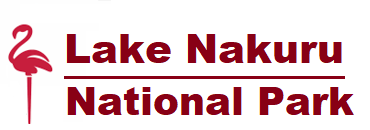
Best time to visit Lake Nakuru National Park
Best time to visit lake nakuru national park .
Best time to visit Lake Nakuru National park: Lake Nakuru National Park a pleasant destination for an African safari that includes but not limited to bird watching, game viewing and sight-seeing. The park is endowed with beautiful features and creatures that leave its guests delighted when they experience the park.
Lake Nakuru National Park is located within Kenya’s Great Rift Valley and is blessed with unique climate that makes the park perfect for a visit any time of the year. The park like any other place in Kenya has two weather seasons thus the rainy season and the dry season; these seasons are experienced in two short seasons of each throughout the year.
The short rainy seasons run from April to June and from October to December, the short dry seasons run from July to September and January to March. However Lake Nakuru National park has a dry semi-humid kind of climate which makes the park have average conditions of not too hot or too cold conditions throughout the year. This means that whether it’s the rainy season or the dry season. The park’s climate will be favourable for a safari at any time.
That said, the park’s unique climate does not negate the fact that there are best times and not so best times to visit Lake Nakuru National Park .
The months most popular for tourist visits to Lake Nakuru National Park are January, February, March, June, July, August, September and October; and this is because these are the driest months of the year, so touring the park is more lucrative and enjoyable. In these months the park grass is shorter and you can easier see the animals, the driving trails are drier so less car trouble, most diurnal animals are moving around the park freely so you don’t have to such long to see them and the nocturnal animals are in shades that are not far from your sight. Also if you are looking at camping and picnicking, these are the best months because they have minimal rainfall meaning less or no interruption to your experience.
April, May, November and December are the less popular months for tourist visits because they have the most rains and they are dubbed the wet months. The rains in these months fairly affect some the activities you can do on your safari and this for any tourist makes it feel like a wasted safari.
However, though those rains may affect some safari activities on a safari , in Lake Nakuru National Park, not much is affected because of the natural climate of the park that is dry semi-humid throughout the year, which means even in the rain seasons the rains are moderate. But also Lake Nakuru National Park is a fenced park so even in the rainy seasons the animals cannot leave the park, you can still see them; plus the road network inside the park is well developed meaning even in the rainy season, your car won’t have much trouble navigating through the park.
Also the rainy months are known to have more birds on the lake and in the parklands because of the abundance of food available in the habitat; this is when the migratory birds migrate to the park. So if birding is your main reason for the visit to the park, the rainy seasons or at the end of the rainy seasons may be a good idea for you to visit the park. The growing flora in the rainy seasons is also beautiful to look at as an addition to your tour.
March, June and September though considered dry months; sometimes these months have moderate rains, so tourists should consider that as they plan to visit Lake Nakuru National Park .

Generally, the best time to visit Lake Nakuru National Park will depend on the activities you would like to do while at the park; those that are favoured by dry weather and those that are favoured by wet weather.
Lake Nakuru National Park is always a must-visit place for locals and tourists who want to experience the best of birding and game viewing. Lake Nakuru National Park is located in central Kenya about 3 to 4 hours from Nairobi, Kenya’s capital. The park can be visited and toured in a day, which makes it an even more convenient option for day safari.
Some of the attractions in Lake Nakuru National Park include the more than 450 bird species in the park on lake Nakuru and the in the parklands, the rhinos and Rothschild’s giraffe in the rhino sanctuary and over 50 animal species that make their habitat in the park’s enclosement.
Lake Nakuru National Park is also a picturesque place with a variety of scenic ridge features that make absolutely scenic spots for sightseeing, camping, picnicking, photo and film sessions among other things.


IMAGES
VIDEO
COMMENTS
Due to Lake Nakuru National Park's high altitude, it usually avoids the scorchingly hot weather you might expect elsewhere in the country, with temperatures typically hovering around 25-28C (77-82F) during the daytime and dropping overnight to around 10C (50F). The best time to visit is during one of the dry seasons - either between July ...
per adult (price varies by group size) Day Tour Nairobi to the Lake Nakuru National Park. Parks. from. $149.00. per adult (price varies by group size) 4 Days Samburu , L. Nakuru & L. Bogoria safari package (minimum 2 Pax) Eco Tours. from.
This can affect everything from flamingo populations to trail access. View Photos (21) Open Map. Best Time To Go June to February (Best for wildlife viewing; little rain) High Season July to February (The park gets very busy) Size 188km² / 73mi². Altitude 1,755-2,053m / 5,758-6,736ft.
Kenya, Africa. Lake Nakuru is among Kenya's finest national parks. Flanked by rocky escarpments, pockets of acacia forest and at least one waterfall, the park is gorgeous year-round and is home to both black and white rhinos, lions, leopards, hippos and endangered Rothschild's giraffes. Rising water levels in 2014 forced the park's famous ...
Lake Nakuru national park is a birder's paradise hosting about 450 bird species making it one of the best birding destinations to visit in Kenya for birding tours, bird watching in Lake Nakuru national park offers an opportunity to spot several bird species such as pink lesser and greater flamingoes, Madagascar Pond-Heron, Lesser Flamingo ...
Climate: The park has a surprisingly higher elevation at 1,756 m (5757 ft.) and is cooler than most Kenya parks, even though it is near the equator. Not too hot or cold, nor wet or dry. Temperatures range from 12 0 - 25 0 c (54 0 - 77 0 f). Best time to visit: Lake Nakuru is open throughout the year. Even the rainy season can't put a ...
Kenya Africa. Lake Nakuru National Park is located in the southwestern part of Kenya, northwest of Nairobi. The national park encompasses an area of 73 square miles (188 sq km). It is a UNESCO World Heritage Site celebrating the flamingos and abundant wildlife. Lake Nakuru is the foundation of the park serving as a wildlife haven.
Lake Nakuru's flamingos are the park's primary attraction.However, you also have the chance of seeing a broader variety of species, including rhinos, giraffes, and leopards. Lake Nakuru is a great standalone day trip if you don't have enough time to visit Kenya's more popular national parks like the Maasai Mara or Amboseli.. Just a 3.5-hour drive from Nairobi along the Nairobi-Nakuru ...
Lake Nakuru National Park. Just two hours' drive from Nairobi, Lake Nakuru is among Kenya's finest national parks. Flanked by rocky escarpments, pockets of forest and at least one waterfall, the park is gorgeous year-round and is home to black and white rhinos, lions, leopards, hippos and giraffes. Rising water levels in 2014 forced the park's ...
Understand. Lake Nakuru National Park is one of Kenya's 23 National Parks and one of two in the Premium category, along with Amboseli National Park. It can be found in Central Kenya, about 90 miles (140 km) northwest of Nairobi, in the Nakuru district of the Rift Valley Province. The ecosystem is comprised of the lake, surrounded by wooded ...
On the floor of the Great Rift Valley, surrounded by wooded and bushy grassland, lies the beautiful Lake Nakuru National Park. Visitors can enjoy the wide ecological diversity and varied habitats that range from Lake Nakuru itself to the surrounding escarpment and picturesque ridges. Lake Nakuru National Park is ideal for bird watching, hiking ...
Why visit Lake Nakuru National Park? Lake Nakuru safari. There are plenty of great things to do in Kenya and one of the Great Rift Valley's most famous soda lakes, Lake Nakuru offers visitors the chance to witness one of the world's most spectacular wildlife sights: brilliant pink flamingos as far as the eye can see.. When conditions are right, between one and two million lesser and ...
Established in 1961, the park has gained global recognition as an ecologically significant region having been named a RAMSAR Site and Important Bird Area. Lake Nakuru is also part of the Great Rift Valley Lake System that is listed as a UNESCO World Heritage Site. The park covers 73 square miles (188 square kilometers) that not only includes ...
Day 1: Explore Lake Nakuru National Park and Hyrax Hill Museum on the first day. Spend the evening wandering around the city's streets and end the day with a bar visit. Day 2: On the second day, go hiking in the Menengai Forest and pass by the sacred caves. Day 3: Start with a day trip to Lake Bogoria.
Expert opinion on the weather & best time to visit Lake Nakuru in central Kenya - East Africa. View Lake Nakuru safari trip prices and honeymoon tour, booking family holidays, solo travel packages, accommodation reviews, videos, photos & maps.
Lake Nakuru National Park offers good wildlife viewing throughout the year, but the best months are from June to February. The rains might interfere with game drives and road conditions can be poor in the wettest months (April and May). However, the reorientation of some tracks to avoid the lake's rising water levels has made trail conditions ...
Lake Nakuru National Park (188 km 2, 73 mi 2), was created in 1961 around Lake Nakuru, near Nakuru Town. It is best known for its thousands, sometimes millions of flamingos nesting along the shores. The surface of the shallow lake is often hardly recognizable due to the continually shifting mass of pink.
Lake Nakuru. First Class. Speak to a certified Kenya specialist to start planning your tailor-made vacation... Call one of our experts or arrange a video appointment for ideas and advice. 617-223-4534. Make an inquiry. Jack. Kenya & Tanzania Specialist.
Lake Nakuru National Park over the years has grown to become one of the most visited parks in Kenya by travelers annually because of the birds and other great features in the park. Travelers that visit Lake Nakuru Park get to indulge in activities such as bird watching, game viewing, camping and picnicking on the beautiful rocky view points in the park and many more activities.
Lake Nakuru is only worth visiting if you have not yet gone to the Masai Mara or one of the other larger parks. This is because Lake Nakuru National park is a small park which you can view in about 3 hours. It will feel anticlimactic if you visit it after spending several days in one of the other larger national parks like the Masai Mara and ...
Why Visit Lake Nakuru? Lake Nakuru National Park is located in the west central part of Kenya in the city of Nakuru; the park protects Lake Nakuru which is one of the lakes in the rift valley at an altitude of 174 meters above sea level. Planning to visit Lake Nakuru national Park, here are 10 reasons why you should put Lake Nakuru at the top ...
Best time to visit Lake Nakuru national park is an important factor to put in mind when planning a safari to this destination. +254-753-029-209 +254-759-588-041 [email protected] Tour Destinations Pay Online
In Nakuru, the mudslide that occurred in Mai Mahiu on 29 April has claimed 52 lives as of 2 May. Search and rescue operations are still ongoing in Nakuru, Nairobi, Kirinyaga, Homa Bay and Tana River.
Lake Nakuru National Park is located within Kenya's Great Rift Valley and is blessed with unique climate that makes the park perfect for a visit any time of the year. The park like any other place in Kenya has two weather seasons thus the rainy season and the dry season; these seasons are experienced in two short seasons of each throughout ...